










LABMONLINE CO UK
SPECIAL REPORT
AFFORDABLE HEAT Matt Sheen from Secure UK considers how intelligent TRVs can help deliver smart affordable heating THE LEADING MAGAZINE FOR LOCAL AUTHORITY AND HOUSING ASSOCIATION SPECIFIERS, INCORPORATING ROAD TO ZERO CARBON KITCHENS, BATHROOMS & DISABILITY NEEDS FIRE PROTECTION & SECURITY NOVEMBER/DECEMBER 2022 LOCAL AUTHORITY BUIL DING& MA INT ENA NCE
Amy Jansen from Brouha Marketing reports on the National Housing Maintenance Forum’s Study Tour of Vienna and the city’s history of social housing

The Housing Forum’s ‘Better Procurement for Better Homes Supplementary Guidance’ ForHousing launches climate action podcast Actis RIBA approved Part L CPD 8 Project update AJC Group starts work on project to deliver 24 ‘ move on ’ homes in Poole for Bournemouth, Christchurch and Poole (BCP) Council 10 industry comment
Matthew Warburton, Policy Advisor at the Association of Retained Council Housing (ARCH) on the need for new funding for council housing sPecial




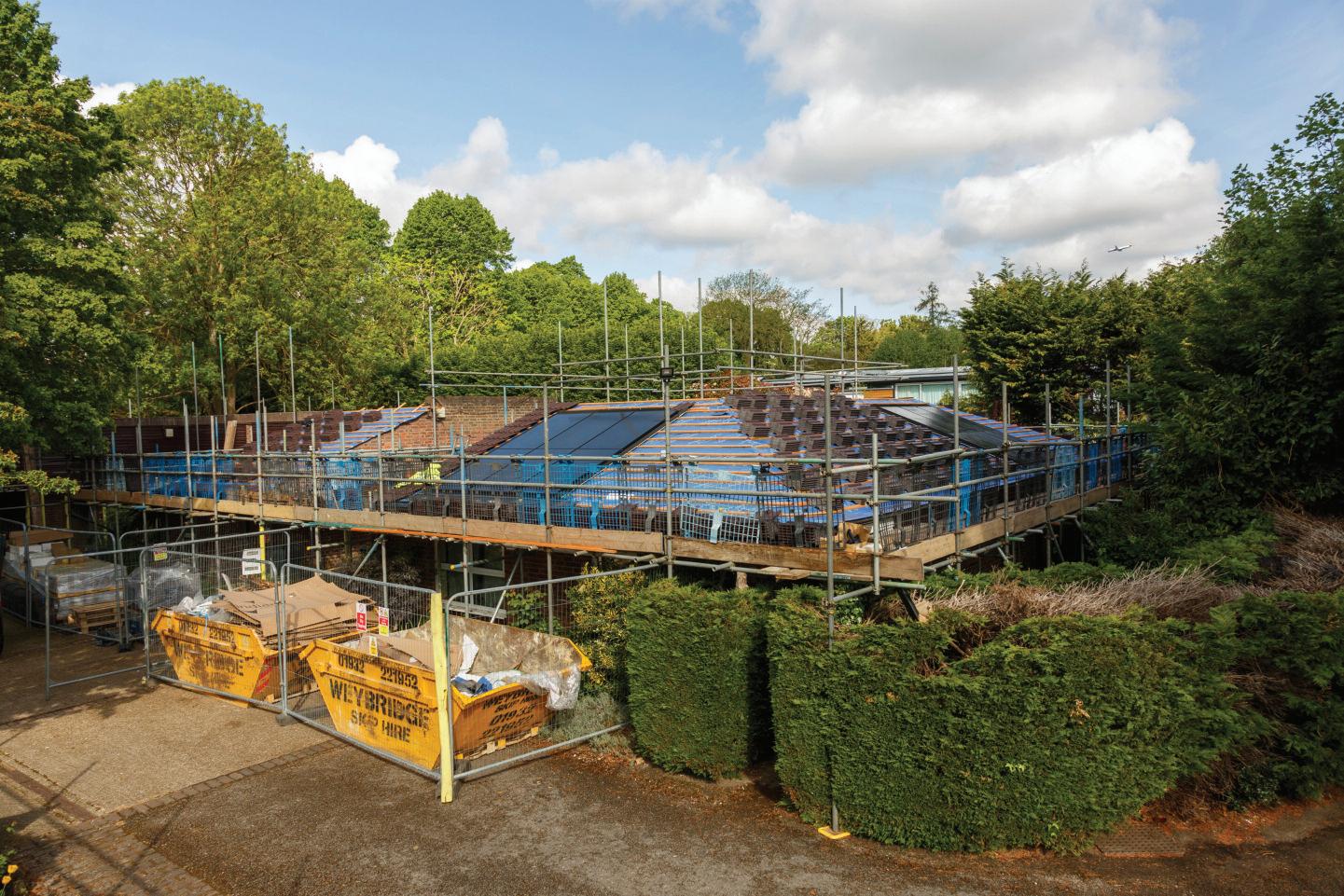
rePorts
12 can intelligent trVs Deliver smart affordable heating? We take a look at the UK’s first smart thermostatic radiator valve
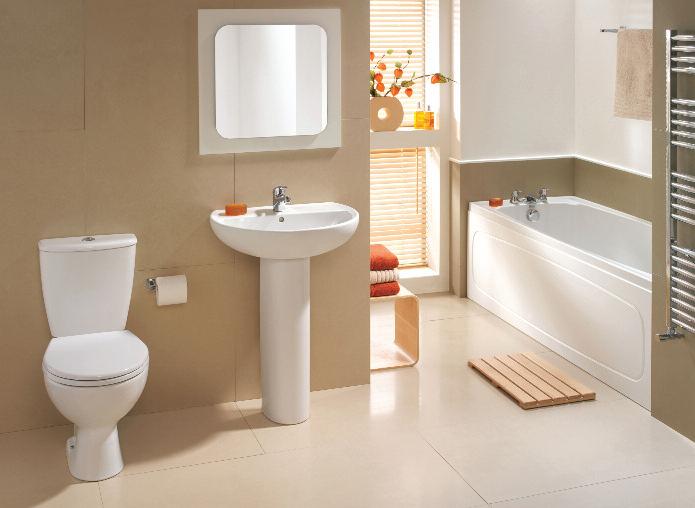
23 setting Buildings on the road to Zero carbon
The critical role of heat decarbonisation to meet the UK’s net zero target
26 By Design
How sustainability is shaping Dulux’s operational and product development 28 setting new standards for energy efficiency An update on the regulations governing energy efficiency and ventilation in housing 30 round up 31 leading the cloud security revolution The challenges facing local authorities and the cloud security solutions available 35
Building
trust Fire safety: Novus Property Solutions offers three key steps to building resident’s trust
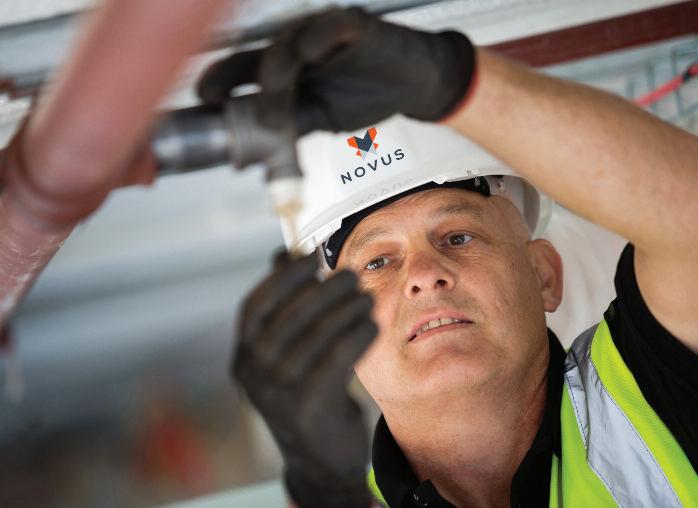
CONTeNTS N O V e M B e R / D e C e M B e R 2 0 2 2 L A B M I 3
5
6
reGulars
comment Duty of Care
news
National Housing Maintenance Forum’s Study Tour of Vienna 18 Drone corner The impact of the use of drones on estates management 20 managing sustainable renovations PA Housing specifies new roof design with solar PV for ageing housing development Fire Protection & security a history of social housing in Vienna | 15 Fire protection solutions for housing | 35 making sustainable bathroom choices | 45 Pa housing specifies solar technology for new roof design on an existing housing scheme to improve energy efficiency | 20 roaD to Zero carBon 39 Getting to Grips with legislation What the new fire safety rules mean for social housing providers 42 successful collaboration to meet Guidance The new legislation mandating the provision of CO and smoke alarms 44 round up 45 Bathroom retrofit Sustainable bathroom solutions for housing retrofit projects 46 means of escape Advice on fire protection and domestic through floor lifts 48 Good Value Working with trusted and reputable bathroom suppliers 50 round up November/December 2022 Vol 38 No 6 Kitchens, Bathrooms & DisaBility neeDs
15 a Whirl around Viennese social housing A report on the

Editor claire clutten labm@hamerville co uk
Advertisement Manager Jacob Tatum jtatum@hamerville co uk
Northern & Midland Area Sales Eddie Wright ewright@hamerville co uk
Group Advertising Manager craig Jowsey
Digital Group Manager Stuart duff
Digital Assistant david Molloy Design Adeel Qadri
Group Production Manager carol Padgett
Circulation Manager Kirstie day
Managing Editor Terry Smith
Printed by WALSTEAd rOcHE
Published by Hamerville Media Group regal House, regal Way, Watford, Herts Wd24 4YF 01923 237799 Email: labm@hamerville co uk

© 2022
Subscriptions to LABM are available at the following rates: UK: 1 year £30 00 post paid Europe and Overseas: 1 year £50 00 post paid Airmail: 1 year £65 00 post paid 11,374 (1 July 2021 30 June 2022)


To be removed from LABM’s circulation please call 01923 237799 or email: circulation@hamerville co uk
D u t y t o c a r e
reflecting on the last 12 months, what a tumultuous year it’s been We’re now on our third Prime Minister, who would have predicted that back in January? in October, ex chancellor Kwasi Kwartang’s Mini Budget sent the economy and financial market into a tailspin, resulting in an intervention from the Bank of England in november, new chancellor Jeremy Hunt announced his Autumn Statement, which included a cap on social rents and an additional £6bn funding boost to deliver energy efficiency and tackle fuel poverty, offering some cold comfort for residents amidst the cost of living crisis
The sector has faced criticism over the last year concerning the quality of social housing An iTV news investigation shone a light on some of the extreme cases residents living in damp accommodation with mould covered walls, talking about the impact of the stress these living conditions are having on their health and wellbeing, how they’ve felt ignored and let down by their housing providers in december 2020, a two year old boy died as a result of prolonged exposure to black mould in his parent’s one bedroom housing association flat in rochdale despite his parents raising numerous concerns before his death, no action was taken Senior coroner Joanne Kearsley said: “How, in the UK in 2020, does a two year old child die from exposure to mould in his home?”
Secretary of State for Levelling Up, Housing and communities, Michael Gove, addressed Parliament in november saying: “The system has been too reliant on people fighting their own corner and we are determined to change that The reforms that we ’ re making will help to relieve the burden on tenants with an emboldened and more powerful regulator
“The regulator will proactively inspect landlords And it will be able to intervene in those cases where tenants’ lives are being put at risk Landlords will also be judged against ‘tenant satisfaction measures ’ ”
The housing association in rochdale will receive no further funding from the Affordable Housing Programme as a consequence of its ‘dereliction of duty’ and Michael Gove has also said other that housing providers found wanting will not get funding in the future
COVER STORY:
Michael Gove is right to take a tougher stance on the standard of social housing, residents deserve much better, and it’s the duty of landlords to ensure the homes they provide are decent, free of damp and mould However, in his industry comment for LABM Matthew Warburton, Policy Advisor at the Association of retained council Housing said that “the only aspect of the issue” Michael Gove’s “statement failed to consider is the extent to which lack of money is part of the problem and if so, whether the Government shares in the responsibility for that”
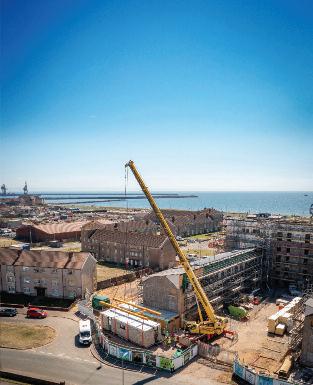
“ M i c h a e l G ove i s r i g h t t o t a ke a t o u g h e r s t a n c e o n t h e s t a n d a rd o f s o c i a l h o u s i n g , re s i d e n t s d e s e r ve mu c h b e t t e r. . . ”
income from rents and grant funding is hugely important to councils and housing associations to help fund their activities
Building safety and energy efficiency works all cost a significant amount of money, on top of that there is the need to build significantly more genuinely affordable homes councils face additional burdens with diminishing planning resources and the costs of social care going up, which all adds to what is a financially difficult operating environment The impact of rising costs and inflation, as well as labour and construction materials shortages, are all being felt across the sector in a session at the Homes UK conference in London recently, several housing providers questioned whether the ‘stick’ approach was the best way forward, saying that by withdrawing affordable housing funding, the people that really suffer are the people that need the homes
On behalf of all the team at LABM, i’d like to wish our readers a Merry christmas and all the best for the new Year
rdr link/lag001



n O V E M B E r / d E c E M B E r 2 0 2 2 L A B M i 5
EdiTOr’S cOMMEnT
SO Modular installed a block of apartments in just one day in Aberavon for housing provider Tai Tarian More details on our website here: www
N N CO E g N M A F HEA M S d d NO / ECEM 2 LO L AUTHO Y BU D N MA N EN NCE
IN BRIEF
New leadership team to drive growth
Ian Williams, one of the UK’s largest privately-owned property services companies, has announced that from April next year, it will be expanding and strengthening its Leadership Team. The new team, led by Zane Poyner, as Managing Director, is bolstered by a series of internal promotions, and represents a wide range of talent and experience, that will support the organisation’s sustainable growth plans.
The new leadership team includes Jayne Cox, Finance Director, Amy Boothman, Sales & Marketing Director, Jason Gorin, People Director, Philip Jones, Painting Operations Director, Craig Jones, Response Operations Director and Warren Buffery, Capital Operations Director.

Seddon raises over £1m for charity
Family-owned contractor Seddon and its supply chain have come together to celebrate its 125th year in business by fundraising over £1m to cancer charity, The Christie, as well as raising funds for local food banks, through a series of inspiring pledges.

A total of 14,220 miles were ran, cycled, swam, sky-dived and beyond across a momentous year that saw employees reconnecting with one another after a challenging few years. Together, the team’s fundraising feats represented one million ways to say thank you to a charity close to the hearts of so many. The Seddon family has a deep personal connection with The Christie, as two family members have received treatment at the specialist cancer hospital.
New procurement guidance
The Housing Forum has published ‘Better Procurement for Better Homes Supplementary Guidance’, which offers advice on how to procure in a hyperinflationary environment.
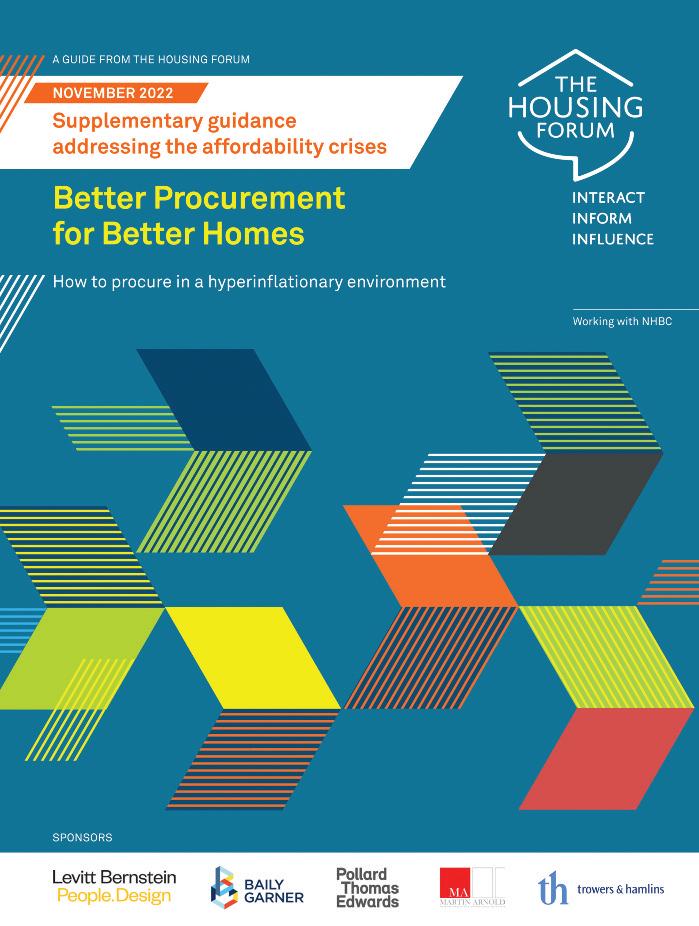
Inflation is now at a 40 year high of 11.1%, fuelled by rising energy costs and global supply chain difficulties. This has created an extremely tough landscape for procuring construction work, threatening the prospects for new housing development.
The Supplementary Guidance, published to help the sector cope with these new inflationary challenges, is aimed at local authorities and housing associations that are seeking to procure new homes in the current economic climate. It is also relevant to developers, contractors and consultants looking to work in partnership to develop housing or tendering for work, as well as policy makers and regulators who need to understand the challenges facing social housing providers bidding for funding.
Matthew Goulcher, Managing Director of Levitt Bernstein and Chair of the Housing Forum Working Group which produced Better Procurement for Better Homes as well as the new supplementary guidance says: “The 40-year-high inflation rate, fuelled by rising energy costs and global supply chain difficulties, has resulted in an
extremely tough landscape for procuring construction work, as contractors and their specialists become reluctant to commit to fixed prices too far in advance of work starting. This has profound implications for clients trying to plan and budget for work. Our new guidance will help steer through these obstacles.”
Shelagh Grant Chief Executive of The Housing Forum comments: “Our new supplementary guide, which is based on the vast practical knowledge and experience of The Housing Forum’s extensive membership, will prove a tremendous boon to housing associations, councils and commissioners who may be considering pausing developments in these very challenging times.”
The Supplementary Guidance is available to download here www.rdr.link/lag002

Social landlord launches climate action podcast
The first series of a climate action podcast by progressive Salford-based social landlord, ForHousing, has been launched on Spotify. The Future Matters podcast provides a platform that brings regional and national voices together, in one space, to help the housing sector keep up the momentum on the journey towards achieving net zero by 2035.
Over the nine episodes of series one, host Mark Lowe, ForHousing’s Director of Assets and Sustainability, meets with decision-makers in sustainability roles in the housing and built environment sectors. He also hears from local councillors and other people within the community, including tenants.
Topics discussed include decarbonisation, net zero targets, fuel poverty and the social impacts of
becoming more sustainable. Among the guests are Mike McCusker, Councillor for Eccles and Lead Member for Planning and Sustainable Development at Salford City Council, Neil Waite and Matt Hodges from NetZero Collective, Brendan Sarsfield, Chair of Sustainability for Housing –creators of the Sustainability Reporting Standard, Liz Blackwell, Group Head of Environmental Sustainability at L&Q and a member of ForHousing’s Customer Committee, tenant Stephen England. You can listen to the podcast here: www.rdr.link/lag003
NEWS
£64m social value boost for Knowsley community
Knowsley-based Livv Housing Group has released its 2021/22 Social Accounts, which reveal the housing association has created more than £64m worth of social value for its customers and communities in the last financial year.
Working with external partners, Livv developed and delivered a wide range of activities that have supported customers with challenges such as improving their mental health and financial wellbeing and enabling people to be job ready through skills and employment support
The total social value generated in 2021/22 represented a 24% increase on the previous year ’ s performance, up from £51 7m in 2020/21
The report focuses on four key areas of support: financial wellbeing, improving mental health and wellbeing, reducing social isolation and supporting young people with employment, and wellbeing and aspiration
The main findings show that Livv supported:
l 3,045 customers to become financially better off
l 3,113 people to improve their mental health and wellbeing
l 1,876 customers to become better connected or reduced social isolation
l 305 young people to engage in sector based training
l 474 young people to improve their overall wellbeing
Léann Hearne, CeO at Livv Housing Group, says: “Social impact is the focus of our Community Investment Strategy and we ’ re incredibly proud to have delivered £64m worth of social value, which sees our customers and communities benefiting from the programmes and support that we provide

“behind every statistic there are the human stories that highlight the impact that our work and that of our partners has had on real people They showcase the work of our teams, whose main focus is to make a positive difference in our communities
“In addition to our investment in commissioned programmes, we ’ ve put in place a team of advisors who have expertise in areas such as mental health, financial wellbeing and welfare, life skills and employment, and tackling antisocial behaviour Our customers tell us that their support has made a real difference to so many people ”
To find out more about view Livv Housing Group and to view the full report, visit www rdr link/lag004
DIArY DATeS
Building and Fire Safety in Housing 2023
This one day virtual event organised by the National Housing Federation will take place on Wednesday 22nd February 2023 The NHF’s Victoria moffet will be delivering a breakfast briefing on working with the regulator to construct safer buildings, there will also be an update from the building Safety regulator and break out sessions covering a range of topics, from how to prepare a safety case, to Fire Safety Act compliance and the essential role of digital data in maintaining the golden thread
Attendees will have the opportunity to hear key insights from the new building Safety regulator, the Department for Levelling Up, Housing and Communities, and the Home Office Speakers at the event include, Liz Oliver, Safer Homes Director at The Hyde Group, Jacqui bateson, managing Director at HACT, Charis beverton, Partner at Winckworth Sherwood, emma burton, Assistant Director if building Safety at Peabody and Susan Fletcher, a Tenant with Together housing More information on the event is available here www.rdr.link/lag005
RIBA approved Part L CPD Insulation specialist Actis has created a rIbA approved CPD Tomorrow's Insulation Solutions for Future Homes Standards which aims to help builders, architects and building control officers negotiate the complexities of the revised Part L of the building regulations
The CPD looks at different tactics to help achieve the greater goal of building Net Zero by 2050, such as the increased importance of having a ‘fabric first' approach It details ways to improve U values, reduce thermal bridging, address the performance gap and improve airtightness It also looks at how to ensure there are no issues with overheating
More information on this and other CPDs from Actis is available here www rdr link/lag006
N O V e m b e r / D e C e m b e r 2 0 2 2 L A b m I 7
PROJECT UPDATE NEWS:

AJC Group commences construction work on 24 ‘move-on’ homes in Poole

Dorset headquartered residential specialist AJC Group has commenced work on a £3 5m construction contract to create 24 ‘ move on ’ homes for Bournemouth, Christchurch, and Poole (BCP) Council in the coastal town of Poole
Located on the site of the former Bourne Valley Community Centre at 56 Herbert Avenue, the purpose designed apartment building will create much needed homes for residents who are currently homeless, or who require a form of move on accommodation The groundworks and infrastructure phase of the project was completed on time, and AJC Group is scheduled to complete the construction and fit out phase by August 2023
Funded by BCP Council, the new development will meet Passivhaus negligible energy demand principles, helping to reduce fuel poverty The
scheme has been designed by Arcus Consulting, with technical drawings delivered by Christchurch based ARC Architects Three of the new homes will be wheelchair accessible There will be 10 parking spaces, a bike store, and a communal garden
David Cracklen, Director of AJC Group, says: “This trailblazing development has been designed locally, it will be constructed by our local supply chain, and as soon as the new homes are handed over to BCP Council, they will be occupied by local people ”
BCP Council’s vision is to end homelessness in Bournemouth, Christchurch, and Poole by ensuring everyone has a safe place to live that they can call home The Herbert Avenue development will reduce the dependency on inappropriate bed and breakfast

accommodation, by providing a more suitable housing solution that can help to stop the cycle of homelessness
Cllr Karen Rampton, BCP Council Portfolio Holder for People and Homes, comments: “To provide homes for families where they can be in the centre of a great community neighbourhood, with everything accessible, is fantastic and I just cannot wait to see the end result ”
Cllr Phillip Broadhead, Deputy Leader of BCP Council, and Portfolio Holder for Development, Growth and Regeneration, says: “We’re aiming to build over 1,000 directly delivered homes over the next few years, and this particular development is delivering for some of our most vulnerable in society, with really good eco standards as well It is keeping jobs in the local economy, helping our residents, and doing it in a way that sets really high standards ”
8 I L A B M N O V E M B E R / D E C E M B E R 2 0 2 2

Wa n t e d — n e w f u n d i n g f o r c o u n c i l h o u s i n g

Among the announcements included in Jeremy Hunt’s Autumn Statement on 17th November was confirmation that local authorities and housing associations would be permitted to raise rents next March by up to 7%, with additional flexibility for supported housing Since the Government had consulted on alternative rent increase ceilings of 3% and 5%, most in the sector breathed a sigh of relief that they would be spared the need to make massive cuts to maintenance and improvement plans at least for one more year.
Landlords still face difficult decisions in setting spending priorities for next year as rising materials and building costs, plus a local authority pay settlement likely to average 7% will eat away at the amount of real work the rent increase will buy Uppermost in their minds will be how to strike the balance between work needed to meet existing standards, including the Decent Homes Standard, and the need to move forward on the new requirements on building safety and moving towards net zero.
Decent Homes
Following the tragic death from mould of a Rochdale child, Michael Gove has, rightly, written to all social landlords drawing attention to their duties to ensure homes are decent, including free from damp or mould, and giving notice that the Regulator of Social Housing
would soon be acting to enforce compliance with this duty
He made a statement to Parliament on 16th November on the same subject, emphasising the additional powers to enforce compliance the Regulator is being given by the Social Housing Regulation Bill currently before Parliament He also said, rightly, that works to alleviate a damp or mould problem that put people’s health at risk should never be put on hold pending legal action; the rule must be ‘fix the problem first, then deal with the legal repercussions’ The only aspect of the issue his statement failed to consider is the extent to which lack of money is part of the problem and if so, whether the Government shares in the responsibility for that
Gove is right to argue that, in a winter when family budgets are hit by fast rising food prices and energy costs, landlords’ top priority must be to ensure that homes are free from damp and mould. But to the extent that available resources are used to tackle these immediate problems, there are less available to, for example, improve energy efficiency to make homes cheaper to heat, or to make them safe from fire or other safety risks
Setting priorities
Each part of Government always tends to believe that its own priority must be the top priority for social landlords Gove may be right that freedom from damp and mould come first, but the new Building Safety Regulator has a different focus,

“ G ove i s r i g h t t o a rg u e t h a t , i n a w i n t e r w h e n fa m i l y b u d g e t s a r e h i t by fa s t r i s i n g fo o d p r i c e s a n d e n e rg y c o s t s , l a n d l o r d s ’ t o p p r i o r i t y mu s t b e t o e n s u r e t h a t h o m e s a r e f r e e f ro m d a m p a n d m o u l d ”
and, according to BEIS, landlords which cannot afford to meet at least half of the cost of energy efficiency works will not be able to bid for the Social Housing Decarbonisation Fund
DLUHC has a wider role than enforcing Decent Homes for all; it is responsible for ensuring that the financial settlement for local authority housing is sufficient to meet all the expenditure needs falling on Housing Revenue Accounts in the coming years ARCH has been drawing attention to the widening gap between expected rent income and long term expenditure needs since well before the current inflationary crisis broke. A rent increase ceiling next year only makes it more urgent that progress is made towards a new and sustainable financial settlement for council housing
www.arch housing.org.uk

INDUSTRY COMMENT IN ASSOCIATION WITH
Matthew Warbur ton, Policy Advisor at the Association of Retained Council Housing (ARCH), discusses the need for a new and sustainable financial settlement for council housing
1 0 I L A B M N O V E M B E R / D E C E M B E R 2 0 2 2

Salford’s ‘Energy House’ presented energy efficiency savings of up to 30%

Although the Government’s domestic energy cap will deliver relief to millions this winter, the number of fuel poverty households is still set to rise significantly. Along with traditional approaches to tackling fuel bills, social landlords can now access the UK’s first smart thermostatic radiator valve Radbot 1.

Energy Activist and Innovator Matt Sheen, Business Development Manager for Radbot at Secure UK Ltd, explains.
C a n i n t e l l i g e n t T R V s d e l i v e r
s m a r t a f f o r d a b l e h e a t i n g ?
Prior to developing Radbot 1, I led a local charity that provided community based energy efficiency advice, a role that helped me to understand the challenges faced by lower income households when it comes to heating their homes
One of the more frustrating aspects is the gap that exists between identifying fuel poor homes and their ability to access the solutions and technologies that will increase energy efficiency and help to lower their bills
The measures needed to tackle fuel poverty have existed for several years, but the challenge is finding the time, money, and political capital to retrofit homes at scale
Most fuel poor homes are cursed with poor levels of thermal insulation Recent analysis of 21 million homes across England and Wales by EDF found that only 58% met the insulation standards of 1976 or earlier, while according to research by the Energy and Climate Intelligence Unit,
poorly insulated homes will use £1,000 more energy this winter
With around 13 million homes requiring improved insulation, and the majority of those also likely to need new efficient low carbon heating systems, the massive inescapable challenge facing those tasked with achieving net zero by 2050 is clear
When domestic energy prices began to rise rapidly last year, 2050 suddenly felt like a very long way away: people were going to need help with their bills immediately, not in five or 10 years ’ time Most of the 6 7 million fuel poor households identified by The End Fuel Poverty Coalition felt the financial pinch immediately, with many of those living in social homes turning to their landlords for assistance
Social assistance
So, what could social landlords do to help?
For most, the only realistic option has been to offer advice or short term financial support, such as increasing welfare and hardship funds to help struggling customers
Metropolitan Thames Valley Housing (MTVH) for example, increased its tenant welfare fund by 50%, while Manningham Housing Association doubled its community investment budget With similar stories being reported at Hexagon Housing Association, LiveWest, Peabody, Hyde and Network Homes
Whilst these packages bring critical short term relief, they are expensive, unsustainable and do nothing to increase energy efficiency and reduce bills
When it comes to rapid technical interventions, what is apparent is that social landlords have relatively few options for quick, low cost and practical energy efficiency solutions
Some have certainly tried Aster, for example, supplied tenants with energy efficient lightbulbs, reflective foils for radiators, window films and draft excluders, but I cannot find any examples (prior to Radbot 1) of new smart home energy efficiency devices fast tracked into tenants’ homes
1 2 I L A B M N O V E M B E R / D E C E M B E R 2 0 2 2
REPORT: SMART AFFORDABLE HEATING
SPECIAL
SOLUTIONS
Trials of the Radbot 1 undertaken at the University of
Radbot
Smart TRVs
What is most exciting about Radbot 1 is that it can finally bridge the gap between ‘smart’ and ‘ now ’ providing an intelligent device that is uniquely affordable, immediate, and easy to install It is a smart thermostatic radiator valve (or TRV) that turns radiators down based on room occupancy and therefore lowering heating bills

The Radbot TRVs can be fitted to radiators on virtually all wet, domestic central heating systems, including most
district heat networks, and the device’s intelligent algorithm begins learning customer living habits as soon as it is activated
It is extremely easy to fit, requiring no special tools or any assistance from an engineer, it simply screws in and replaces the existing radiator valve It has also been purposely designed to operate without the need for a web connection, app or password, so the user has no need to set up an account or own a smart phone or computer
And like many effective technologies, all of Radbot 1’s complexity has been absorbed into the devices learning algorithm, making it a genuine fit and forget product that needs next to no technical or customer support A single Radbot 1 costs around £30+Vat, and trials undertaken at the University of Salford’s
‘Energy House’ presented energy efficiency savings of up to 30%


Endorsed by the Energy Saving Trust, Radbot 1, also provides a SAP uplift of between one to eight points depending on the property This helps to improve property EPC ratings, which in turn helps housing providers meet their energy efficiency and net zero carbon reduction targets It is also an approved measure for the ECO4 and SHDF government energy efficiency schemes

It was also our intention from the outset that Radbot 1 work in harmony with existing or future home energy devices or technologies and will still deliver benefits once homes are retrofitted with new energy efficient heating systems or improved fabric, reducing energy consumption and subsequent carbon emissions
n For more information on Radbot 1 please visit www.rdr.link/lag007
1 is easy to fit, requiring no special tools or any assistance from an engineer
Crown Commercial Service: Reasons to think modular first for your construction projects.
M o d u l a r B u i l d i n g S o l u t i o n s
Demand for building projects across the UK is rising, however with funding at a premium, those tasked with designing and delivering projects face tough decisions
Modular buildings offer a cost effective and less disruptive alternative than traditionally constructed buildings They can be designed and manufactured to fit your local authorities unique requirements and are adaptable for a wide range of projects such as a standalone classroom, a row of terraced housing, a block of flats or a complex office block with common areas and plant rooms if required
Today’s modular buildings have evolved significantly over the last few decades Today’s clean, linear buildings offer cheaper, bespoke solutions, minimum material wastage and lower energy bills a far cry from the draughty school huts many people imagine Here are some reasons why you should rethink modular buildings and consider them for your next construction project
sustainability
Modular buildings can reduce your carbon footprint too; 67% less energy is used in creating a modular build versus its equivalent traditional build Modular buildings are commonly created from recycled materials and minimises disruption to existing environment

Problem solving
Modular buildings are constructed 50% faster than traditional builds, on average Many can also be easily expanded, relocated, refurbished, and reused
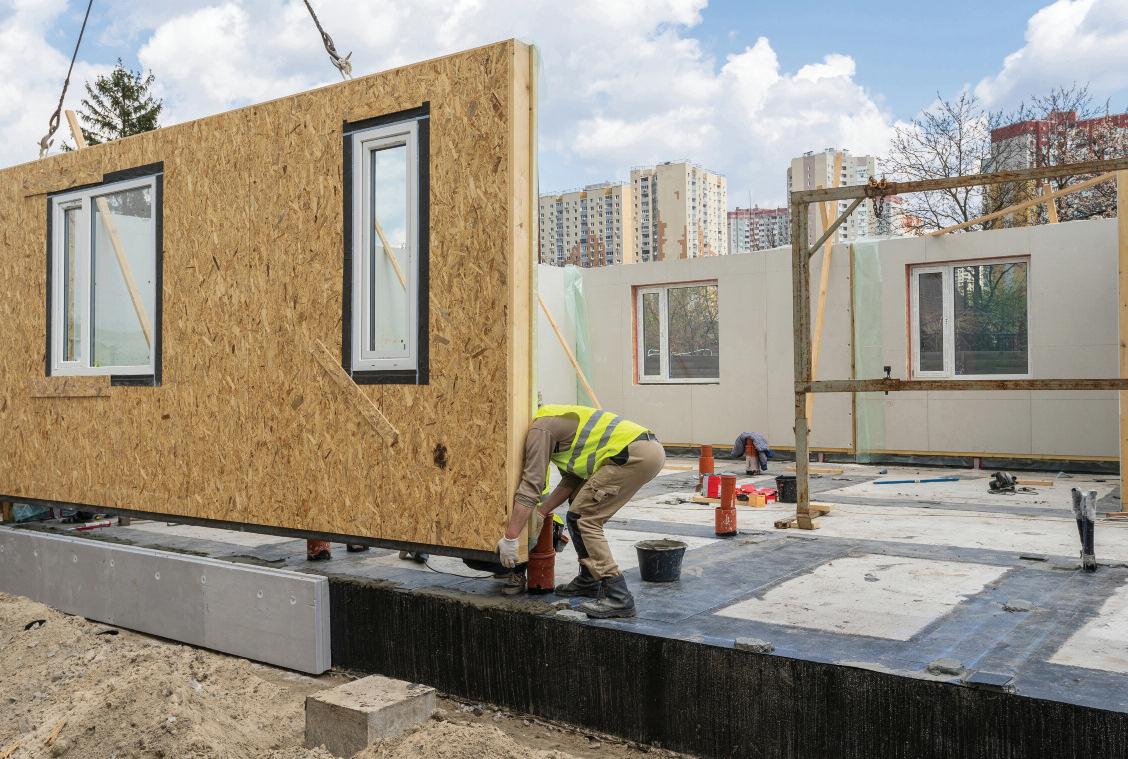

perfect for solving any problems you might not have budgeted for Prefabricating the building in factory conditions indoors increases quality control and removes the constant threat of the Great British weather creating hold ups, helping you to deliver projects on time and with less defects

Health and safety
Reducing the danger of traditional building sites by manufacturing your buildings in controlled settings is a big plus point for local authorities, especially when building in residential areas where the safety of children and residents is paramount Having your modular buildings created offsite, where safety measures can be monitored more effectively, lowers the risk of accidents
speed and efficiency
As much of the work is done in advance and offsite, your construction site will be minimal, creating less disruption for everyone concerned Any problems that occur during the construction process can be easily solved by the team of experts during the manufacturing process, which means less work and disruption when they arrive Timescales are radically reduced in comparison to traditional construction, due to onsite activities, such as groundworks, taking place simultaneously as the building is manufactured offsite
A simple, low cost way to meet your modular requirements
Crown Commercial Service has designed its Modular Building Solutions with local
authorities in mind There are 19 suppliers listed as part of this framework, including suppliers who specialise in provision for healthcare and education as well as suppliers who can provide buildings for a range of purposes including residential homes This framework is the perfect way to meet the needs of your local population while ensuring both speed of delivery and value for money
Crown Commercial service is here
to help
CCS is an Executive Agency of the Cabinet Office, supporting the public sector to achieve maximum commercial value when procuring common goods and services
n to find out more about modular building solutions and how CCs can help with your construction procurement, visit www crowncommercial gov uk and download our latest digital brochure

1 4 I L A B M N O V E M B E R / D E C E M B E R 2 0 2 2 Modular buildings are constructed 50% faster than traditional builds
Advertisement FeAture
SPECIAL REPORT: A HISTORY OF SOCIAL HOUSING IN
A whirl around Viennese social housing
Until I started writing the Social Housing series two years ago, for the BrouHappy podcast, social housing wasn’t something I knew very much about I was aware of it as an essential part of our society, I understood in an academic way the significance it played in the lives of those living within the system, and I was conscious of the contentious place it held within the historical and social fabric of England but these were superficial understandings I was ignorant of the deeper issues and nuances that shaped this topic far more than I could ever imagine
My dive into the history of social housing in this country was fascinating, heart warming, deeply saddening as is with anything that holds and affects the lives, legacies and futures of human beings

When the chance to join the National

Housing Maintenance Forum (NHMF) Study tour to Vienna, I jumped at it The NHMF’s sole purpose is to support and promote best practice in social housing maintenance, and as my only real point of reference had been the UK system and yes, I understand that can, at the most generous, be described as academic here was the opportunity to see how another country went about it in the company of industry experts, and as well as expand my understanding of the system as a whole
Next stop, Vienna
The NHMF study tours began with the aim to explore how other European countries approached their social housing so that those in the industry could learn from other models, and potentially bring

Amy Jansen, Creative Director at Brouha Marketing, joined the National Housing Maintenance Forum’s Study Tour Vienna

2022 earlier this year for an eye opening exploration of how a country’s 100 year history of social housing has evolved into an inclusive, modern, and socially and environmentally aware system.
lessons back that could benefit England
This year ’ s tour was to Vienna, and the two days planned by the committee were full of visits to social housing programmes and talks from expert representatives from Austria’s Housing Authorities
Vienna’s history of social housing starts well before any buildings were built or residents housed As with anything, the historical context is intimately entwined in the place that Vienna finds itself today so, before I get into the tour itself, I think it’s important to take a look back
100 years in the making World War One may not have had an immediate impact on the city, but the economic embargo imposed by the victorious Entente powers France, the UK and Russia meant that food and
N O V E M B E R / D E C E M B E R 2 0 2 2 L A B M I 1 5
VIENNA
SPECIAL REPORT: A HISTORY OF SOCIAL HOUSING IN VIENNA
clothing became scarce Housing also became increasingly hard to find Refugees from across the Austrian Galicia filled Vienna’s streets, and once fighting had ceased, the former soldiers of the Imperial and Royal Army joined them, too By 1918, the population of Vienna was nearly two million, higher than it is today
Rather than subletting rooms, people were renting out beds, and those on night shifts would switch with those on the day shifts Our tour guide on the first day of the tour joked that there wasn’t a cool bed left in Vienna at the worst of it, and I can see what he means There was so little
time between occupants, that beds were constantly warm As a result, the sanitation of these houses and beds was, as you could imagine, devastatingly poor, and illnesses such as tuberculosis and the Spanish flu were rife
SDAP paints social housing red
In 1918, the Social Democratic Workers’ Party of Austria, the SDAP took power of Vienna, and even for a short time, the whole of Austria It was under the SDAP that Vienna saw the beginning of social housing traditions it recognises today They put in place a rigorous programme of
construction projects across the city in response to the housing shortages, and implemented policies to improve standards of public education, healthcare and sanitation Many of the Gemeindebauten or what we would call municipal housing complexes built at the time survive through to today

The aim of many of the initiatives was to create community rather being exclusory By integrating social classes, it meant that social housing became more than simply building a place to live, but instead to create liveable, integrated social communities that offered high standards of living at an affordable price
A social responsibility
Vienna is one of the fastest growing cities in Europe, and because they deem housing a service for the people, along with transport, water supply and waste management, it’s not something they feel can be privatised As such, the city invests over 350 million Euros each year on housing construction and refurbishment, with a further 85 million Euros as contribution towards those who aren’t able to meet their already subsidised rents This socially aware approach to social housing has meant that Vienna has seen a drop in evictions due to missed rent by two thirds
Our first official stop was to a talk by Gerald Kossl, Head of Housing Research & Policy at the Austrian Federation of Limited Profit Housing Associations, GBV GBV is a membership organisation made up of private companies, either not profit
“The NHMF study tour s began with the aim to explore how other European countr ies a pproached their social housing so that those in the industr y could lear n from other models , and potentially br ing lessons back that could benefit England.”
driven or state dependent, and housing cooperatives Together, these companies cater for just over two million people, roughly 24% of the Austrian population Nearly all of that housing is mixed tenure multi storey blocks, which as I mentioned a moment ago, is a tenet that has remained from the SDAP days The developments, the tenure of choice for low and middle income households, provide that integrated social mix, and removes the stigma of living within the social housing system
Gerald took us through the finer points of the financing of these schemes mostly bank and public loans with the remaining funding coming from tenants’ contributions and HA equity, the sustainability strategies, and how local
“T h ey p u t i n p l a c e a r i g o ro u s p ro g ra m m e o f c o n s t r u c t i o n p ro j e c t s a c ro s s t h e c i t y i n re s p o n s e t o t h e h o u s i n g s h o r t a g e s , a n d i m p l e m e n t e d p o l i c i e s t o i m p rove s t a n d a rd s o f p u b l i c e d u c a t i o n , h e a l t h c a re a n d s a n i t a t i o n . ”
management and tenant representation is put in place to maintain the sense of community within the complexes In terms of the sustainability efforts of these schemes, Gerald explained that most of the housing is on district heating, and green landscaping is used to combat heat island effects, and their commitment to a circular economy for building materials
The reality of Viennese social housing

The rest of the first day was spent touring a number of social housing developments which was absolutely eye opening I don’t feel that I’m exaggerating when I say that I was blown away by the facilities Each project included kindergartens, schools, pharmacies, doctors everything that the residents could need One complex had swimming pools on the roof, a gym, sauna, physio and physical therapy studios, an acoustically soundproofed music room, as well as allotments available to residents on 12 month leases
Each project was clean, tidy, shoes racks were left outside front doors, bikes and children’s buggies were left undisturbed in the spaces under stairs, and one of my tour fellows discovered, having summoned the elevator, that the mirror on the rear wall was entirely intact and unmolested I know that may sound like I’m being flippant, but really, I’m not The experience of so many on the tour was that of shock Based on their first hand experiences with social housing in the UK, this was almost unrecognisable as social housing
Much of the conversation that came from these visits bordered on incredulous there was no question about this being a place they would like to see UK social housing end up, but the question was, how? What changes would be needed
within the system we have in place to see these kinds of scenes in the English multi storey social housing complexes? As you would imagine, there wasn’t a consensus reached, but there was an enormous amount of inspiration found within those hallways and green spaces
The system can work
I think what I have come away with from this tour is a profound realisation of the good that social housing can do for the society in which it functions It can provide dignity and security to those who need it most, as well as maintaining a connection between all those that live in it I am well aware that any change to an already established system like ours in the UK will be slow, as it’s not just the housing associations that have stakes in it, but that the socially integrated and pleasant spaces seen around Vienna are achievable with the right investment of time and finances
I have also left knowing full well that I will need to go back and explore the city and its history further
Brouha Marketing is a boutique PR and Marketing firm based in Wiltshire. Brouha Marketing sits within the built environment sector, with a special focus on social housing and the environmental issues For more information, visit brouhamarketing.com, or email hello@brouhamarketing com


n If you would like to read the official NHMF report, written by Andrew Burke, you will find it here www rdr link/lag008, and if you would like to register your interest for the next tour, you can contact Joanna on joanna@m3h co uk n The NHMF will be unveiling details on next year’s Study Tour at its annual Maintenance Conference on the 23rd 25th January in Stratford upon Avon You can find out more here www rdr link/lag009
n For more information on the NHMF, please visit www.nhmf.co.uk
N O V E M B E R / D E C E M B E R 2 0 2 2 L A B M I 1 7
Roof inspection with drones

To ny D oy l e, D i r e c t o r & O p e ra t o r a t S e a g u l l A e r i a l S u r vey & P h o t o gra p hy a n d m e m b e r o f t h e I n s t i t u t e o f R o o f i n g , c o n s i d e r s t h e i m p a c t o f t h e u s e o f d r o n e s i n e s t a t e s m a n a g e m e n t o n t h e r o l e o f s u r veyo r s
Drones have been increasing in prominence within the ‘property and estates management’ sector for several years now, giving those charged with maintaining their roofs unprecedented means of safely and economically assessing the condition of those roofs But what’s the reality here? Can drones really take the place of old fashioned manual roof inspections? Is the flying camera going to put roof surveyors, mobile access operators and scaffold hire companies out of business?
The simple answer is ‘No’ a manual inspection, where the surveyor can peel back defective membrane laps, peek under slates to see the nails and battens, or prise open a sheet metal lap to see the insulation below, will always be the ideal means of determining the state of a roof
But obtaining ‘the ideal’ is not always practical or even possible Countless roofs around the country have suffered years of neglect simply due to the fact that they were too high, too complex or too dangerous to climb onto for routine inspection (in other words too expensive!) The managers of the property have tended to wait until there’s an issue with the roof before spending money on investigation and remedy The adoption of drone technology into the roofing maintenance business has changed all that
Drones have opened up new ways of working, and increased efficiencies, within
the roof maintenance sector, sometimes by being able to substitute for an expensive manual inspection but also by being able to enhance traditional manual inspections
New ways of working
When used for routine and regular maintenance inspections, drone cameras will often be able to record that the roof is in good condition, with no obvious defects This gives the premises management peace of mind that no expensive repairs are imminent And all for a relatively modest fee

Or maybe the drone imagery has revealed some defects requiring attention Missing slates, loose lead flashings or blocked outlets are some common items These will require manual access to the roof, but the contractor now knows exactly what is required and can price and organise the job accordingly
On other occasions the roofing or building surveyor examining the drone images will conclude that there is an underlying problem with the roof, which requires further investigation Evidence of nail or batten fatigue on a slated roof would be such an example In this case a manual inspection by an experienced surveyor would be recommended and some form of safe access will be required, but the roofing surveyor is forearmed with good information regarding the roof’s condition, and having used the drone to identify the roofing problem will have been money well spent
Ideal combination
Sometimes the client’s requirement is for a more thorough roof survey than can be supplied by drone imagery alone A full appraisal of the underlying components of the roof build up, their condition, and their impact on design matters such as condensation control and thermal performance may be the brief Even in this case it is likely that only isolated parts of the roof can be accessed either by tower scaffolds or cherry pickers, and it’s often impossible for an operative to safely traverse the entirety of a pitched roof Their external survey may be limited to a localised area of the roof, but by working in combination with a drone they can obtain information about the likely extent of any problems or pertinent roofing conditions
The drone may only be a flying sensor, but premises managers today have a readily available safe and economical means of staying ahead of the curve when it comes to managing their roofing assets
n For more information on Seagull Aerial Survey & Photography visit www rdr link/lag010
n For more information on ARPAS UK visit www rdr link/lag011

n For more information of Connected Places Catapult visit www rdr link/lag012

1 8 I N O v E M B E r / D E C E M B E r 2 0 2 2 L A B M DrONE COrNEr IN ASSOCIATION WITh:

M a n a g i n g s u s t a i n a b l e r e n o v a t i o n s
When PA Housing decided to refurbish an ageing development of 12 homes, it was a natural decision to include solar technology into the new roof design. However, the logistics around sourcing, storing and delivering to a site with little space proved challenging Working in partnership with the supplier tur ned out to provide the answers, as LABM finds out.
Tree Close in Richmond, Surrey, is an age exclusive community of 12 homes, built in 1975 by PA Housing The homes, which are solely powered by electricity, struggled to retain warmth and were costly to heat due to a low EPC rating Housing association PA Housing identified them as ideal for solar panels to bring down the cost of
heating Such an installation would also contribute to the association’s longer term objective to make its homes more sustainable The end result is 12 new roofs, completed with Marley SolarTile
Ken Lee, Senior Project Manager at PA Housing says: “Many of the tenants of Tree Close are retirees living on a fixed income Rising heating costs are taken very seriously To help address this, it was important that we thoroughly investigated ways we could make these homes more efficient This included adding to the level of insulation in the walls and in the loft where possible, and installing solar panels ”
Contactor Kingsley Roofing was enlisted for the job, and relied
on the support of supplier SIG Roofing for supply, warehousing and stock control of products These particular solar panels were specified as they are supplied as a complete kit, with no need for extra battens, adhesive flashing or fireproofing materials, and they were readily available through SIG Roofing
However, when it came to the rest of the roof, the initial specification insulation and roof tiles were unavailable due to product shortages Fortunately, SIG Roofing was able to source and specify suitable alternative roofing products that matched the brief, and worked with Kingsley Roofing to supply them as needed

Establishing good relationships
“Firstly, we needed a supplier who could fulfil a large order of solar panels and hold them in stock to be delivered to site in batches,” explains Dan Martin, Contract Manager at Kingsley Roofing “SIG Roofing provided this for us by warehousing our

ROAD TO ZERO CARBON
PA Housing specified the Marley SolarTile for the refurbishment of properties on Tree Close in Richmond
stock at their Leatherhead facility and working with us on deadlines
“When we realised that we also needed to source alternative branded products to complete the installation, SIG Roofing had the right people with the knowledge and expertise on hand to specify suitable insulation and tiles, and supply them within the ideal timescale ”
As the construction materials shortage continues across the UK, flexibility and good relationships between contractors, suppliers and manufacturers are more important than ever, to ensure that alternatives can be found if necessary
“We have a long relationship with SIG Roofing, and working with them as a supplier is always fantastic,” says Dan “They will go the extra mile for you It was a large order and they helped us immensely ”
Material specification


Each 1,000 by 1,686mm monocrystalline black Marley SolarTile has an output of 335Wp and is suitable for new build and
retrofit projects alike Easy to fit, they average an installation time of 45 minutes per panel, and can enhance any roof system with design flexibility, sleek aesthetics, industry leading wind and fire performance, and are backed by a 10 year manufacturers guarantee


The alternative products that were specified included Knauf Earthwool and Kingspan Thermapitch TP10 insulation, specified to compliment the project’s overall sustainability and energy saving agenda, and Crest Double Roman roof tiles
Knauf Earthwool is an eco friendly, green building material that offers superior sound deadening, for a more peaceful living environment Made from recycled glass bottles, it keeps homes at the ideal temperature by regulating humidity and moisture levels, which means less fluctuation in energy bills
Kingspan Thermapitch TP10 is a high performance insulation with a fibre free rigid thermoset polyisocyanurate (PIR) core It is certified 'Excellent' to BES 6001, the Framework Standard for the Responsible Sourcing of Construction Products Crest Double Roman roof tiles feature a timeless shape, enhanced by a smoother rounded edge, which enhances the finished roof They have a covering capacity of just 9 7
“M a ny o f t h e t e n a n t s o f Tr e e C l o s e a r e r e t i r e e s l i v i n g o n a fi x e d i n c o m e . R i s i n g h e a t i n g c o s t s a r e t a ke n ve r y s e r i o u s l y. To h e l p a d d r e s s t h i s , i t wa s i m p o r t a n t t h a t we t h o ro u g h l y i nve s t i ga t e d wa y s we c o u l d ma ke t h e s e h o m e s m o r e e ffi c i e n t . ”
tiles per square metre, allowing for a roof that is both economical and attractive
“We were very excited to have the opportunity to work on this project,” says Dan Anstey, Divisional Sales Director at SIG “It was made possible through our great relationship with Kingsley Roofing We were happy to support throughout the project with technical advice too ”
Sustainability in construction
SIG, recently appointed CO2nstructZero Business Champion by the Construction Leadership Council, and a Supply Chain Sustainability School (SCSS) partner, takes sustainability in the construction industry very seriously
“This opportunity to ensure energy saving equipment was supplied to a social housing development was extremely important to us, especially in the midst of energy shortages, and rising fuel poverty,” comments Mark Clark, Director of Sustainable and Renewable Sales at SIG “Any initiative to make housing more efficient, both in terms of energy and cost, is critical ”
Ken at PA Housing concludes: “This is the first of many developments that we hope to make improvements at, with the view to both helping our tenants live more comfortably and to help us in our sustainability goal of reaching net zero by 2050 over all of our 24,000 homes ”
N O V E M B E R / D E C E M B E R 2 0 2 2 L A B M I 2 1
Contactor Kingsley Roofing installed the solar panels, which were supplied by SIG
n More information on SIG Roofing and its services here www.rdr.link/lag013
The monocrystalline black Marley SolarTile has an output of 335Wp

Setting buildings on the road to zero carbon

Considerable progress has been made in reducing UK greenhouse gas emissions, down by 49 7% in 2020 on 1990 baseline levels1 according to the latest government figures But clearly far more needs to be done to accelerate the transition to zero carbon and the public sector is no exception
D e c a r b o n i s i n g h e a t i n b u i l d i n g s h a s b e e n i d e n t i f i e d a s a n e s s e n t i a l t a r g e t U l t i m a t e l y, t h e g o a l i s t o t r a n s i t i o n t o l o w c a r b o n h e a t i n g t e c h n o l o g i e s s u c h a s h e a t p u m p s Re f l e c t i n g t h i s , g o v e r n m e n t f u n d i n g s u c h a s t h e P u b l i c S e c t o r D e c a r b o n i s a t i o n S c h e m e i s m o s t l y l i m i t e d t o f u l l e l e c t r i f i c a t i o n o f h e a t , h e l p i n g s c a l e u p t h e h e a t p u m p m a r k e t a n d m e e t i t s a m b i t i o u s t a r g e t o f 6 0 0,0 0 0 u n i t s a y e a r b y 2 0 2 8
The merits of heat pumps are well established in new and well insulated buildings But here’s the problem: while new buildings should be designed to be energy efficient and heated by low temperature heating, most existing buildings will need a series of adaptations to make them heat pump ready

The unfortunate reality is that spending the entire budget on a heat pump to decarbonise an older, draughty non domestic building without any other preparation will not necessarily guarantee success And as a poorly performing heat pump will result in high running costs, an inadequately heated building, and unreliable heating and hot water, it’s a scenario we must avoid at all costs
So how best to tackle the heat decarbonisation challenge and achieve best value performance for budget from a heating system refurbishment?
Phased approach
First, it’s important to recognise that on every refurbishment project, there will likely be a number of constraints, including time, budget, available power and physical space

Heating manufacturers and heat experts can provide valuable support to local authorities looking to reduce emissions across their estates A good starting point is for estates managers to identify their immediate, medium and long term goals, as well as the available time to complete the work, the budget and any

funding opportunities This will make it possible to plan out and design the phased stages of refurbishment
Plotting a pathway to net zero has the advantage of enabling local authorities to budget ahead while ensuring good
Heat pumps have been identified as having an important role to play in the energy transition, particularly in buildings designed from the ground up to use low temperature heating effectively

N O V E M B E R / D E C E M B E R 2 0 2 2 L A B M I 2 3 ROAD TO ZERO CARBON
Ryan Kirkwood, Heat Pump Business Development Manager at Baxi, discusses the critical role of heat decarbonisation in achieving the UK’s 2050 net zero target and the importance of best practice design.
©michelaubryphoto/AdobeStock
practice design for maximum energy, carbon and cost reductions at each stage
Energy efficiency

Energy efficiency is absolutely critical to reducing emissions and, as such, should always be the first consideration when dealing with existing buildings The cleanest and cheapest kWh of energy is, after all, the one you don’t use
Implementing passive measures such as roof and wall insulation, draught proofing and improving the thermal performance of windows and doors will reduce heat losses and energy demand, delivering an immediate impact on a building’s energy consumption and heating bills What’s more, investing in energy efficiency measures will also help prepare the building fabric for the transition to low carbon heating
Energy data analysis
Having a detailed understanding of how and where the building uses energy is also vital Data can be gathered in a number of ways, through analysis of energy bills, meter readings, or interrogation of the building energy management system, or by measuring real flow rates in different places and conditions over a given time
The energy usage patterns will reveal how the building operates, including the peaks in heating and domestic hot water demand and how it compares to the current plant and heat emitter sizing Armed with this data and an awareness of the project constraints, experienced heating manufacturers can help identify where heat pumps can be most effectively used, and design accordingly
For example, if the energy data reveals that air handling units (AHU) are accounting for a sizeable proportion of the heating load, one option might be to bracket the space heating system Modular AHUs are generally served by a separate CT circuit and have coils that are relatively easy to swap from high to low temperature (access issues aside) Using heat pumps to help decarbonise a considerable part of the heating demand would be a valuable step along the road to zero carbon

Alternatively, in a building with high domestic hot water (DHW) demand and low heating demand, and a marginal amount of spare electrical capacity, a small ASHP may be enough to provide a sizable amount of preheat to the DHW demand, utilising proper thermal storage

Finally, where an all electric approach is not currently feasible, an alternative might be to consider multivalent methods of heat and hot water generation Utilising
existing or new high efficiency combustion fuelled appliances with heat pumps is time proven to decarbonise a large portion of the annual heat demand For this reason, this approach cannot be overlooked as a first step in the heat decarbonisation process, especially when backed up by supporting data
Tackling the challenge
We know that heat decarbonisation is critical to achieving our 2050 net zero ambition But we also understand that it can be a huge challenge in existing public sector buildings However, while there is no silver bullet solution, there is an established best practice approach As heat experts, we are at hand to provide guidance and support By working together to balance best performance for budget value with best practice for heat decarbonisation, we can tackle the task at hand and begin setting even the hardest to heat buildings on the road to zero carbon

https://assets publishing service
8/2020 final
gas emissions statistical release pdf 2 4 I L A B M N O V E M B E R / D E C E M B E R 2 0 2 2 “P l o t t i n g a p a t h wa y t o n e t z e ro h a s t h e a d
r
rg y, c a r b o n a n d c o s t re d u c
i o n s
t e
g e . ” n Baxi’s report Schools and the Heat Decarbonisation Challenge evaluates the different technologies and approaches to achieve more sustainable heating in older school buildings It is available for free download here at www rdr link/lag014 n For more information on the Remeha E HP AW heat pump range, visit www rdr link/lag015
1
gov uk/government/ uploads/system/uploads/attachment data/file/105140
greenhouse
va n t a g e o f e n a b l i n g l o c a l a u t h o r i t i e s t o b u d g e t a h e a d w h i l e e n s u r i n g g o o d p ra c t i c e d e s i g n fo
ma x i mu m e n e
t
a
a c h s t a
ROAD TO ZERO CARBON
Remeha E HP AW Air Source Heat Pumps

B y d e s i g n
Design has a massive impact on the success of a building We’ve witnessed all too frequently the legacy of buildings built to satisfy a specific short term need or designed according to the latest trends, which pose a real dilemma for building managers 10, 20 or 30 years down the line when they fail do we regenerate or rebuild?
Design is not just about how something looks but also crucially how it performs, and in the built environment sector, the consequences of making poor design choices are far reaching In recent years, a much greater emphasis has been placed on specification, building safety, addressing the performance gap between ‘ as designed’ and ‘in use ’ , promoting
occupant wellbeing and delivering more sustainable outcomes, and rightly so Councils and housing associations are increasingly looking to specify solutions that can contribute to a built environment project’s low/zero carbon credentials and originate from a more sustainable source companies demonstrating a commitment to achieving net zero both operationally and in terms of their supply chain and product development
At Dulux Decorator Centre, BREEAM and the WELL Standard have been important drivers for innovation, especially with respect to developing solutions to indoor air quality challenges such as Volatile Organic Compounds VOCs are chemicals which are emitted from furniture

and cleaning products, and released into the air when paint is applied to a surface, and can be damaging to people’s health, for example causing breathing irritation, eye problems, dizziness and headaches

Duncan Lochhead, Commercial Sustainability Manager at Dulux Decorator Centre says: “The use of VOCs in paints has been a big issue for a long time ”
Which is why companies like Dulux have been working hard to significantly drive down the use of VOCs in paints Duncan says: “Dulux have formulated a range of wall paints called Airsure, which are 99 9% VOC free and produce very low emissions when applied ”



Launched in December 2020 following successful pathfinder trials, the range is already proving popular in office, education and healthcare environments
Waste watchers
Waste is another major challenge for the paint industry Dulux Decorator Centre conducted research recently, which found that in the average person ’ s home, there are around 17 tins of half empty or unused paint in people’s sheds and garages The cumulative impact of this is that, as Duncan reveals: “between 40 and 50 million litres of paint a year goes to waste ”
This highlights the scale of the sustainability challenge, which is why it’s
ROAD TO ZERO CARBON
LABM caught up with Dulux Decorator Centre’s Commercial Sustainability Manager Duncan Lochhead recently to discuss the impor tance of colour and design in the built environment, and to find out how sustainability is shaping the company’s operational and product development.
Windrush Primary School
hugely positive to see social enterprises like Community Repaint run by Resource Futures and sponsored by Dulux emerge to tackle issues like paint waste Duncan says that most unused paint is reusable, which is where the paint reuse network comes in The social enterprise sets up waste recycling centres in local authority areas, collects leftover paint and redistributes it to local communities and charities at an affordable price In 2019, Community Repaint redistributed over 365,000 litres of paint
Duncan adds: “Schemes like this are essential for helping to divert a huge amount of paint that otherwise would’ve gone to waste ”
Part to play
Keen to play its part in addressing the issue of waste in the industry, Dulux undertook its first foray into circular economy design, developing product using recycled materials Duncan says: “Dulux have a product called Evolve, which is made up of 35% recycled content We are bringing old paint back into use and reengineering it to reach a consistent level of quality and then it’s mixed with standard paint ”
Using recycled content in new product development also helps to lower carbon emissions, as it means fewer raw materials are being mined to produce new paint Dealing with empty paints cans is another major challenge for the sector Duncan says: “Around 100 million empty paint cans go to waste every year in the UK We’ve established an empty can recycling scheme through our Dulux Decorator Centres and we ’ ve just recycled our one millionth can ”
To prevent empty paint cans from ending up in site skips, Dulux Decorator Centre is encouraging local authorities and housing associations to write can recycling into tenders and contracts
Duncan adds: “We are also introducing plastic packaging containing 50% recycled content In fact, we've already done so to over 70% of our plastic packs, by volume ”
Training and development
Dulux Academies (including those located at Dulux Decorator Centres) deliver training courses for painters to get them used to using new paint formulations,

particularly waterborne paints, which are much more sustainable and have a lower carbon footprint
In the early stages of Dulux’s sustainability journey, the company worked with the Forum for the Future to develop an Environmental Impact Analyser to help them develop robust lifecycle carbon data for their entire product range from the raw materials mined out of the ground all the way through to end of life Duncan says: “We’ve used this to inform our decisions whenever we are reformulating existing ranges and designing new products ”
On the back of this, Dulux created the Lifecycle Tool, which helps customers to model different specifications over a 30 year period Duncan says: “We formulate our products to last longer so that customers can extend their maintenance cycles, and you can model that on the lifecycle tool By looking at products that will last longer, it means you ’ re not redecorating so frequently that delivers a cost saving and lowers carbon footprint too ” Operationally, for the last three or four years now Dulux has been using renewably generated electricity to power its factories, stores and office spaces With 50% of the paint it sells delivered direct, to reduce its transport emissions Dulux is currently rolling out electric vehicles to its distribution teams For Dulux, it’s important that sustainability is embedded right across the business
Getting specifications right
One thing Duncan is keen to emphasise is the importance of getting specification right Duncan says, “there’s a lot of copy and paste that goes on, ” incidences where previous specifications are reinstated, yet in the intervening period, legislation, technology, performance and formulations evolve to the extent where the original specification no longer offers the most effective solution
Duncan urges specifiers to speak to experts like Dulux Technical Support Managers By discussing project requirements and key objectives with specialist suppliers, who can suggest the most appropriate solutions in terms of performance, suitability for application, regulatory compliance, sustainability credentials and so on, as well as provide expert advice on colour schemes, helps ensure the best outcomes for specifiers
The impact of colour on building design and occupant health and wellbeing should never be understated Duncan Lochhead says: “It’s often a relatively small element at the end of a project, which has a disproportionately large impact on building users You can create incredible visual impact, help improve learning in schools and healing outcomes in health environments, as evidenced in healthcare and education studies ”
Which is why, Duncan says, “it's disappointing when you see a very safe approach to colour and design” being used in a building When specifiers opt for the RAL 9010 (off white) paint colour, Duncan says, “it's a missed opportunity”

Dulux has done a lot of work over the years developing tools to help built environment specifiers when it comes to designing colour schemes for a variety of applications This includes projects with the BRE on its Dementia Friendly Demonstration Home and most recently, The Biophilic Office, which is focused around applying the connection people have with nature and exploring how nature based solutions can be incorporated into the built environment to improve the internal environment and wellbeing
n To find out how the Dulux Decorator Centre can help you on your projects visit: www.duluxdecoratorcentre.co.uk/
N O V E M B E R / D E C E M B E R 2 0 2 2 L A B M I 2 7
S e t t i n g n e w s t a n d a r d s f o r e n e r g y e f f i c i e n c y
UK Net Zero emissions targets came into law in June 2019 and will significantly impact local authority building projects While the original legislation sets a formidable challenge for national Net Zero emissions by 2050, urgency has been added following the Sixth Carbon Budget of April 2021 The follow up legislation underlined

the need for the public sector to become more sustainable, necessitating a 76% reduction in emissions by 2035 against a 1990 baseline
It is in this context that updates to the Future Homes Standard (FHS) legislation have come into force The legislation includes ambitious goals for new social housing constructed from 2022 to produce 31% less carbon emissions, with any refurbishment works to existing housing also being made in line with emissions reductions The FHS comes into force for new build homes in 2025
Future Homes Standard
The first FHS consultation was completed in February 2020 with a secondary review ending in April 2021 From there the Government’s response was to implement significant changes to Part L (conservation of fuel and power) and Part F (ventilation) of the Building Regulations Before the full FHS comes into effect in
2025, there are more immediate developments on the horizon
After publishing in January 2021, changes to Part L and Part F came into force on 15th June 2022 The amendments look to significantly improve energy efficiency standards and will reshape the specification of windows as well as other building products
FHS requirements made clear
The new June 2022 FHS requirements on the face of it seem straightforward The new standards have been a long time coming, with changes first announced in the Government’s 2019 Spring Statement

During this time the updated FHS has been subject to more consultations, resulting in some of the most important legislation, regulating building design for local authorities seeing fast paced changes
Part L and Part F of the Building Regulations under the FHS have become a significant talking point for council specifiers,
ROAD TO ZERO CARBON
Steve Tonkiss, Head of Sales at REHAU, explores the updates to the regulations gover ning energy efficiency and ventilation in housing, and how windows and doors offer a way for specifiers wor king on social housing projects to be compliant.
©Richard Johnson/AdobeStock
architects, surveyors and contractors who work on public and social housing projects, with discussions ongoing about FHS mandatory requirements
Energy efficiency
The updated requirements in Part L deal with U value, which is a calculation that determines thermal resistance and therefore, insulating characteristics of a window or door
U-values for new housing
Under the new requirements U values have been tightened for windows for new build projects, optimised to 1 2W/m²K and the limiting U value (for SAP calculation method) set at 1 6W/m²K Doors in new housing are also impacted, with those consisting of more than 60% glass assigned a target U value of 1 2W/m²K Doors with less glass require a lower value of 1 0W/m²K
U Values for refurbishment projects
Replacement windows for refurbishment projects must have a B window energy rating (WER) or a maximum U value of 1 4W/m²K New doors in a refurbishment project with a glazed area greater than 60% also require a U value of 1 4W/m²K or WER C If less than 60% glass, these doors still need to meet the 1 4 W/m²K specified, but also must meet a comparatively higher WER B rating
Ventilation
Ventilation standards are contained in Part F of the FHS As with windows energy
efficiency covered in Part L, ventilation applies to both new housing and refurbishment projects The ventilation standard states that old windows with trickle vents must be replaced by windows that have trickle vents that are at least the same size or larger and be controlled automatically or by the dwelling’s occupants
If the frames being replaced do not have trickle vents, then the new windows must adhere to minimum Equivalent Air Area requirements
Equivalent Air Area

Part F sets out targets for the minimum amount of air that can pass through new vents, or EQA For existing housing, approved under test conditions, a minimum EQA of 8,000mm2 is specified for habitable rooms and kitchens For bathrooms without a toilet or habitable rooms with continuous mechanical extract ventilation, excluding wet rooms, the EQA standard is 4,000mm2
For new builds, guidance allows three ventilation systems: l System 1 is known as ‘natural ventilation’ which allows the use of trickle vents and is used in dwellings defined as ‘less airtight’ ‘Less airtight’ is a design stage calculation showing air permeability higher than 5m²/ hm² at 50Pa If airtightness tests are carried out after the build, air permeability must be higher than 3m²/hm² at 50Pa
l System 2 uses continuous mechanical extraction, allowing for trickle vents with a minimum EQA of 4,000mm2 for each habitable room The number of vents in a dwelling should be two more than bedrooms (e g three for a one bed dwelling, four for a two bed dwelling, etc ) l System 3 requires a mechanical ventilation system with heat recovery and no provision for background ventilators
Once the required system has been established, minimum EQAs can be implemented For habitable rooms and kitchens in multiple floor housing, the EQA is 8,000mm² For single floor (bungalow) counterparts 10,000mm² is required An
“T h e l e g i s l a t i o n i n c l u d e s a m b i t i o u s g o a l s fo r n ew s o c i a l h o u s i n g c o n s t r u c t e d f ro m 2 0 2 2 t o p ro d u c e 3 1 % l e s s c a r b o n e m i s s i o n s . ”
EQA of 4,000mm2 is shared across bathrooms in either type of property, with no requirements for utility rooms or sanitary accommodation
Route to compliance
In recent years PVC U has seen a rise in popularity due to its combination of thermal efficiency and cost effectiveness, with new developments in PVC U frame foils now offering authentic representations of other frame materials such as wood and aluminium

Continued innovation in materials has enabled a circular economy of resources with PVC U, proving it as a sustainable option for windows and doors, which is a key consideration on public housing projects
It is with this in mind that PVC U systems have long offered windows and doors that exceed relevant Building Regulations REHAU’s TOTAL70C, for instance, can be specified for the highest performing new build and refurbishment projects, with the company ’ s GENEO solution capable of achieving the U values required for Passivhaus projects
Navigating FHS requirements
The pace of change and ongoing debate around compliance with updated standards has caused concern and some confusion in the construction sector In response, REHAU’s commercial technical team is working in partnership with those designing public sector housing to help them navigate the changes This includes the offer of free CPD courses that aim to ensure specification teams are compliant and understand the new requirements for windows and doors
N O V E M B E R / D E C E M B E R 2 0 2 2 L A B M I 2 9
n For more information on the
Standard click here www.rdr.link/lag016
Future Homes
New air source heat pump range

Hamworthy Heating has launched its first ever monobloc air source heat pump range, the Tyneham, designed for public and commercial buildings applications One of the smallest commercial heat pumps on the market, it features a co efficiency of performance (COP) rating of up to 4 85, to provide efficient, low carbon heating The seven models in the range boast six nominal outputs of between 14 to 70kW, which can also be cascaded to achieve higher outputs in larger installations Incorporating inverter controller compressor to accurately match the heat demand, RG32 refrigerant also maximises low global warming potential Quiet running and featuring a monobloc design, all components are conveniently housed in the main unit, which is compact and lightweight for ease of commission and installation
Boost to net zero

As part of a pioneering partnership with Innovate UK, Equans has invested in two net zero carbon software specialists through the Clean Growth Innovation Fund which will support the UK’s energy, digital and industrial transitions through the development of disruptive technologies, services and business models The two software specialists are Grid Edge and OnGen Grid Edge’s digital AI software empowers building operators to reduce their CO2 emissions, bring energy costs under control and improve building comfort OnGen’s digital platform provides a technical and economic feasibility assessment to support the decarbonisation of buildings, campuses, and industry quickly identifying opportunities to reduce costs and carbon emissions through embedded renewables and low carbon solutions

Heat pump range for commercial buildings

New from Ideal Heating is a range of monobloc air source heat pumps designed to help improve energy efficiency and reduce reliance on natural gas within commercial buildings Available in six outputs and seven models (14kW, 14kW (single phase), 18kW, 26kW, 32kW, 50kW and 70kW), the ECOMOD range provides a minimum A++ Energy related Products (ErP) efficiency rating and high co efficient of performance (COP) rating of up to 4 85 R32 refrigerant ensures a low global warming potential (GWP) The heat pumps also include an inverter controlled compressor that can control the building temperature based on the specific requirements of the space, further enhancing the efficiency of a building They can also be installed alongside other Ideal solutions to build a low carbon hybrid heating system

SterlingOSB Zero is produced in Scotland by West Fraser (Trading as Norbord Europe Ltd) from forest thinnings taken from sustainably managed forests The small amount of wood waste from the manufacturing process is burned on site contributing to the energy to manufacture the boards West Fraser's CaberFloor and CaberMDF ranges are produced from 80% post consumer wood waste that is purchased from the saw milling industry The company ’ s panel products produced in the UK are net carbon negative, FSC (C012533) certified and manufactured in mills with ISO 14001 accreditation The panels can be 100% recycled SterlingOSB Zero is also the first OSB product to be made in the UK with zero added formaldehyde
Energy efficient heat recovery

The Lo Carbon Tempra single room heat recovery unit from Vent Axia offers the ideal solution to tackle condensation and mould, and with residents facing rising bills with the energy crisis, the unit’s heat recovery mode will be a welcome way to save money too Improving air quality on a room by room basis, the through the wall mounted single room heat recovery unit simultaneously extracts stale air and introduces fresh air The unit is a discreet, low energy, continuously running alternative to traditional extractor fans that offers affordable heat recovery of up to 78% It’s performance, taken together with its integral Lo Carbon DC motor, brings significant energy savings and will help reduce a home’s carbon footprint with a low power consumption of just 3 2W on trickle rate

TO ZERO
ROAD
CARBON ROUND UP
Cutting out waste for a greener wood panel
n For more information on the
range visit
n For more information on ECOMOD visit www rdr link/lag019 n For more on EQUANS and its services visit www rdr link/lag018 n To find out more about the net carbon negative status of West Fraser's products visit www rdr link/lag020 n More information the Lo-Carbon Tempra here www.rdr.link/lag021 3 0 I L A B M N O V E M B E R / D E C E M B E R 2 0 2 2
Tyneham
www.rdr.link/lag017
Leading the cloud security revolution
With many local author ity employees now operating in dispersed and vir tual settings, we’ve seen the swift adoption of remote systems, operated from the cloud and mobile networ ks to enable collaborative wor king and more agile processes LABM speaks to Steve Riley, Division Director at Comelit-PAC to discuss the challenges faced by local author ities and what solutions are available that can be cost effectively implemented into ever y day secur ity strategies
This rapid transition has and continues to change perceptions, especially when it comes to security maintenance and monitoring, with many teams across the UK starting to understand the efficiency gains of cloud based surveillance But it has also exposed a range of vulnerabilities from securing remote access to targeted cyber campaigns, giving criminals the opportunity to exploit any uncertainty and cause serious breaches, either in a physical sense or with regards to sensitive data
Setting the cloud scene
The evolution of cloud based, connected technologies and the magnitude of what they are enabling in local authorities is immeasurable, even highlighted as the way to ensure successful devolution On a local level, the benefits of ease of administration and data security management, especially for remote teams are seen as the biggest cases for making the transition As local governments continue their cloud
modernisation efforts, now is a good time to take a step back when it comes to newly implemented systems, ensuring they have been embedded in correctly and are right for the long term

In times of plenty, when purchasing technology, immediate needs are often prioritised over future requirements When local authorities face a predicted period of austerity, alongside a well documented stretched resource, budget issues and recruitment challenge, a different mindset is required
It means taking a long term scalable view, where we know every investment in technology and works programme will be scrutinised far more closely It can seem daunting to focus on making significant changes to known systems, and embracing technology when there is so much demand for local authority resources and services on a day to day basis
It is essential to build a strong case from the ground up Here, case examples show how making even small changes can make
a significant difference, not only for local authority teams, but also on efficiency of service and ultimately resident security
Security in the cloud
Islington Council has worked with Comelit PAC to create a cloud based door entry solution for managing access control to communal residential developments across its housing portfolio
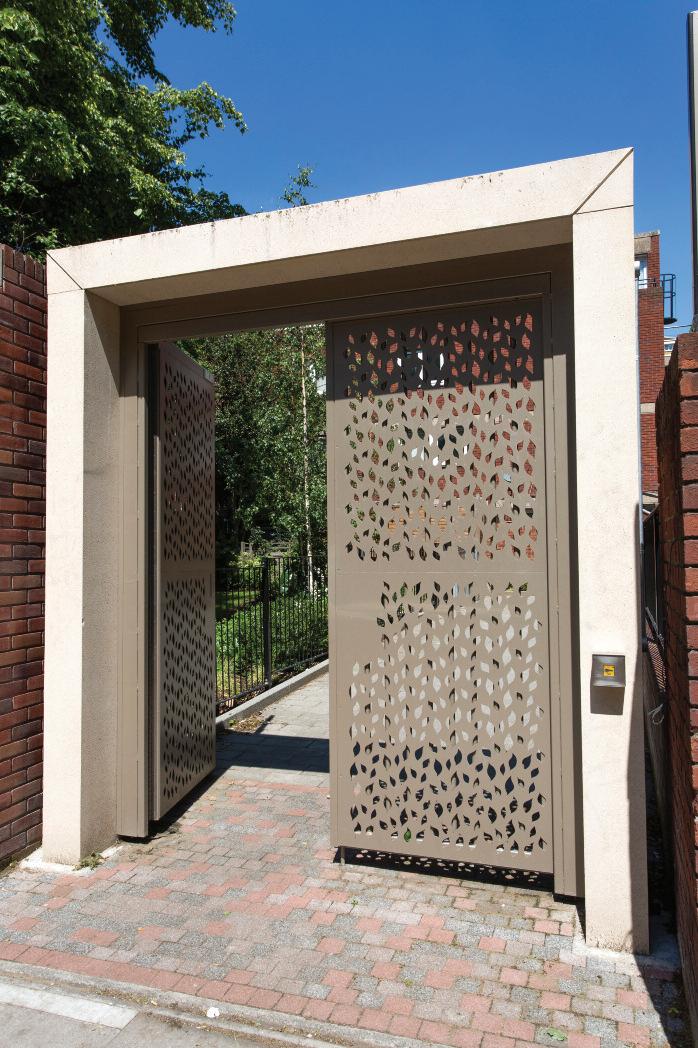
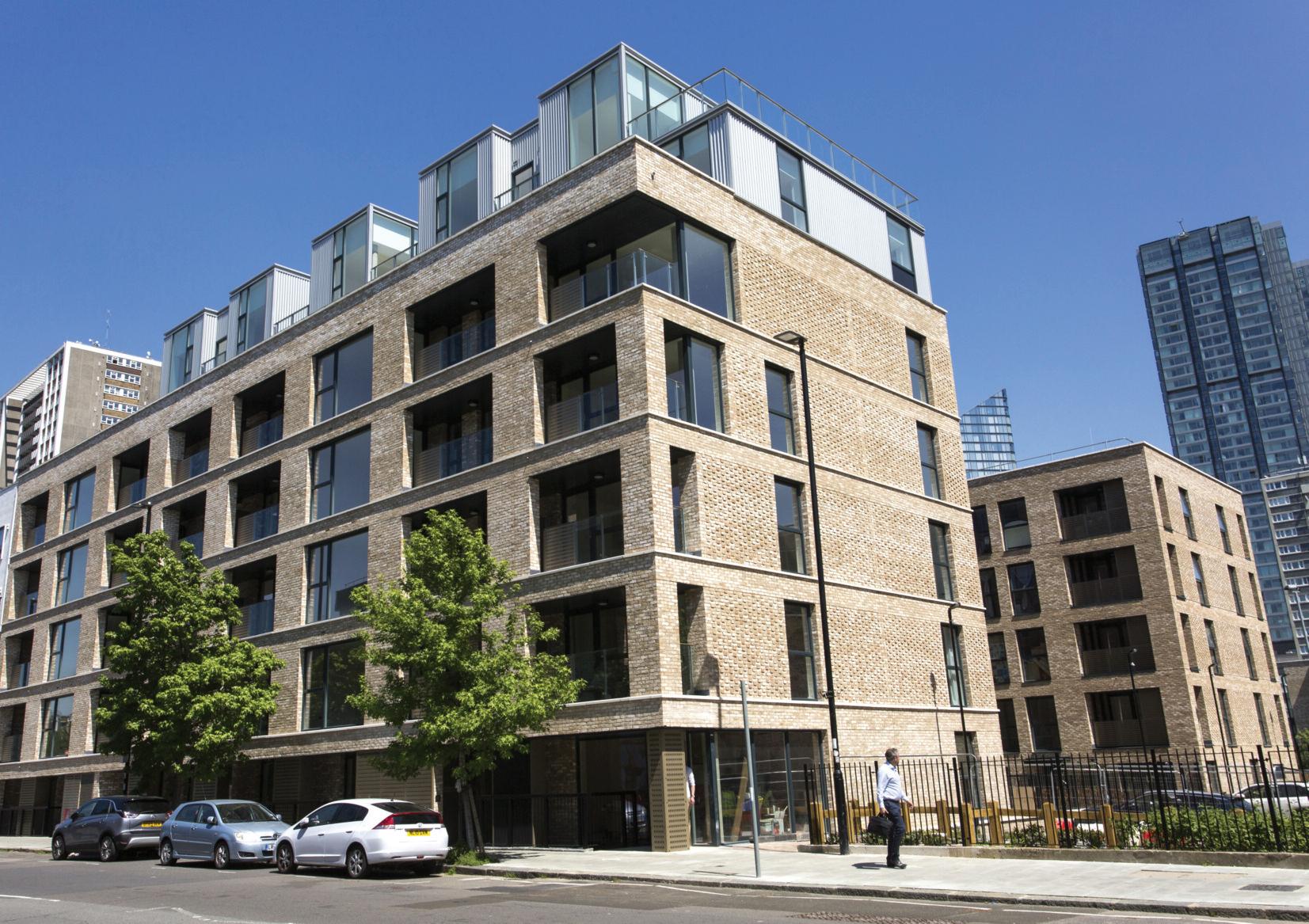
As a leading London Borough Council, Islington has made the transition to a PAC cloud solution across its housing network, delivering improved security for residents
Initially, PAC pilot tested the system across six blocks chosen by the council’s capital works team The pilot was successful in working around residents to ensure a seamless transaction of fobs and secure access to communal areas The works have now been extended to more locations across the borough
With the ongoing programme, Islington Council is committed to safe and secure housing for residents across the borough
N O V E M B E R / D E C E M B E R 2 0 2 2 L A B M I 3 1
PROTECTION & SECURITY
FIRE
Katial House, Kings Grove, London
London Borough of Islington’s Redbrick Estate
The PAC security system can accommodate the high frequency movement of residents and operators who may need controlled access to communal areas Overall, the PAC installation offers greater peace of mind and safe audit control
The London Borough of Islington has been using PAC systems for over 25 years, with the team working closely with technical services from specification to installation, ensuring a seamless transition from the existing standalone system to the smart cloud based solution

From the borough’s perspective, the remote capability enables a much more efficient approach to managing access throughout our properties, enabling resident instant access, and old resident details can be removed and replaced as necessary At the same time, Islington has peace of mind that data captured is secure in the cloud, in compliance with latest standards
Building a secure cloud strategy
Alongside the advantages of higher security, there is a secondary benefit to

operating in the cloud, and this is where data governance considerations come into play It’s important that sensitive resident data is stored and managed in line with regulatory requirements not only to maintain compliance but also to mitigate security concerns
Local authorities need to maintain strict control over sensitive data and retain the ability to delete or destroy that data when required
A lack of effective data governance is a worry, mainly because poorly structured data makes it much more difficult to detect and monitor when something goes wrong Any misuse of data, especially in the public sector, can have far reaching consequences and could lead to a loss of citizen trust
Cloud security for the long term
Many local authorities are turning to access control systems that use a high frequency reader, and Comelit PAC presents with a PAC OpsID Device This combination also provides unrivalled security as the ID Devices are not cloneable like many LF ID Devices
Overall, it prevents the casual copying of access control credentials, and helps eliminate invisible passage throughout the facility Rogue credentials are possibly the biggest risk to resident security and data protection
It demonstrates how local authorities are becoming increasingly reliant on mobile devices and cloud based technologies to run their teams and vital services, networks and services, taking all necessary technology precautions to retain
a level of security maintenance that can accommodate evolving needs
In summary, today, security needs to be considered in a different way, and as more is connected, the requirements change too This can be clearly seen as local authorities look to benefit from 4G and 5G communications as the future of communications, with Comelit PAC launching new modem technology early in 2023 to accommodate
By understanding the bespoke local authority security options for residents as early as possible, Comelit PAC can work with teams to design and specify requirements that are scalable to suit budgets, all without compromising resident security
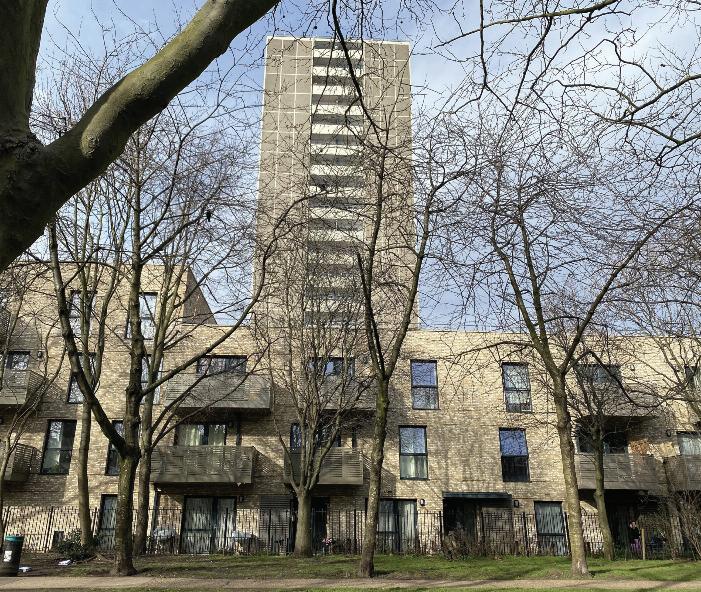
The crux of this is good product architecture and specification, which Comelit PAC can provide, alongside design, advice on works programmes, maintenance and monitoring It’s all part of our pledge to be ‘with you always’ and allows understanding of cyber security processes that need to be layered in, minimising the risk of exposing sensitive information residing in the cloud
The good news is that with a layered security strategy, the correct tools, and the appropriate cloud partners in place, many of the most significant security challenges faced by local authorities, even in the current climate, are surmountable
n For more information on Comelit PAC’s cloud based security solutions visit www.rdr.link/lag022

3 2 I L A B M N O V E M B E R / D E C E M B E R 2 0 2 2
Kings Square Estate, Islington
“Islington Council has wor ked with Comelit PAC to create a cloud based door entr y solution for managing access control to communal residential developments across its housing por tfolio ”
PROTECTION & SECURITY
Ponder Street, Islington
FIRE



Building tr ust
David Bar nes, Operations Manager at Novus Proper ty Solutions, discusses
 safety plays in housing refurbishment and retrofit projects, as
building residents’ tr ust
safety plays in housing refurbishment and retrofit projects, as
building residents’ tr ust
Refurbishment and maintenance are vital elements of social housing management, ensuring not only resident satisfaction but also resident safety
Fire safety compliance measures have always been an important consideration in housing construction and refurbishment projects However, this understandably became top of the agenda following the Grenfell tragedy in 2017, which highlighted the devastating physical, emotional and financial impact that fire safety measure failings can have on individuals and local authorities
Since then, fire safety measures in public buildings particularly in social housing have been under intense scrutiny and local authorities are rightly under more pressure than ever to get fire safety right first time This may seem like an easier task for new build projects where fire prevention and protection measures can be implemented according to the

the vital role fire
well as the three key steps for

latest legislation, but it’s just as important to apply these measures to existing properties through retrofit installations
Fire safety legislation is updated regularly and varies between different regions of the UK, so consulting with an experienced specialist contractor before
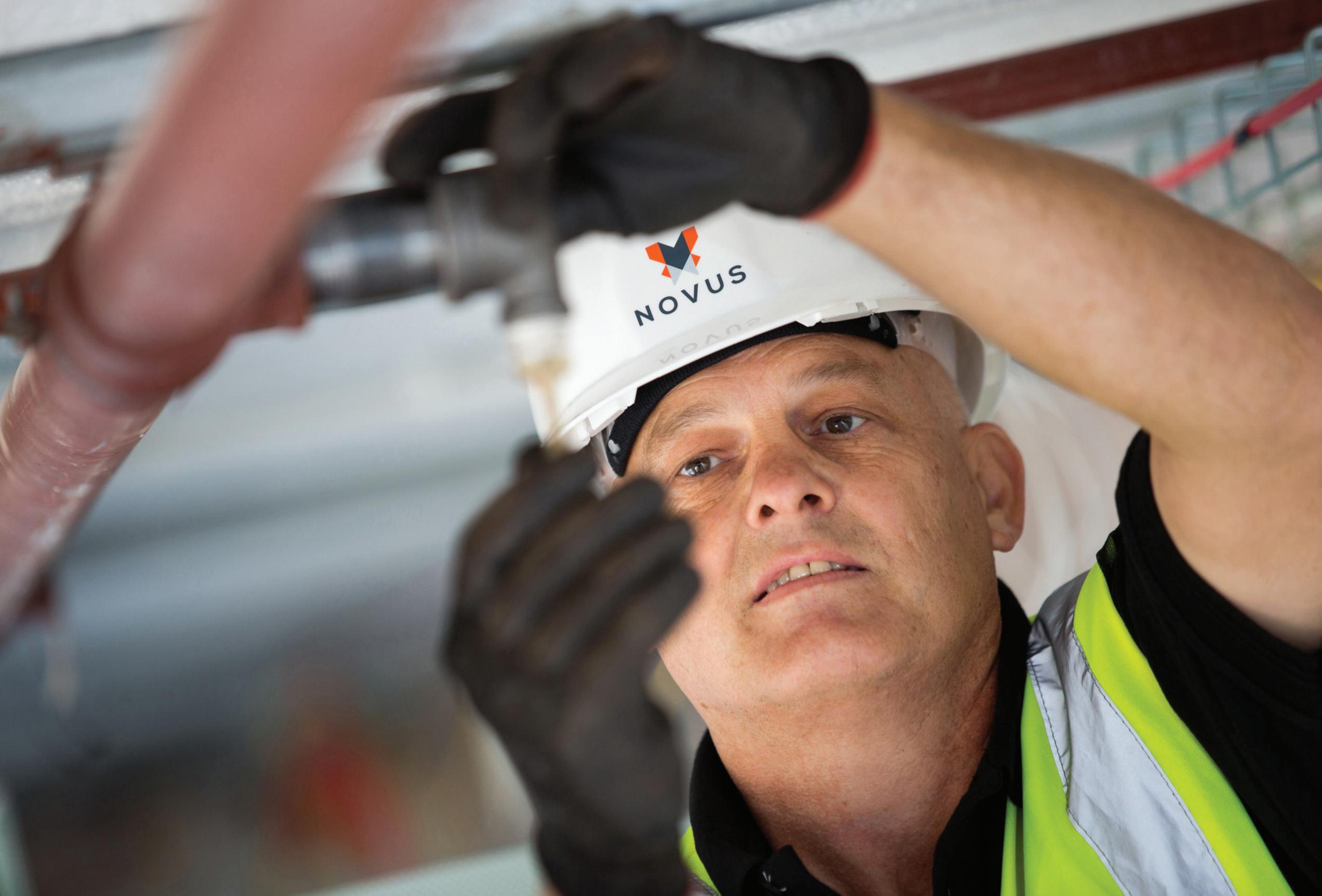
embarking on fire safety improvement works is highly recommended
Trusted contractor
Collaboration is key when it comes to ensuring social housing meets the latest fire safety regulations, and local authorities
N O V E M B E R / D E C E M B E R 2 0 2 2 L A B M I 3 5 FIRE PROTECTION & SECURITY
The correct installation of fire doors is one of the most effective ways to slow the spread of fire
Loft spaces are known to present a severe risk of rapid fire spread
and social housing landlords should work closely with a chosen contractor from the very beginning of a retrofit project
There are many contractors across the UK that are able to deliver such projects, but it’s always best to choose those with tangible experience delivering fire safety compliance services as well as industry accreditations to demonstrate this professionalism For example, Novus Property Solutions offers clients a dedicated Assure service for a comprehensive range of passive fire protection measures carried out by highly trained and experienced individuals
Not only does this type of specialist service offer added reassurance that any fire protection measures will meet all relevant legislation and quality standards, but also that the best products for the job will be chosen
Trusted measures
Working in collaboration with an experienced contractor is the best way to ensure a retrofit installation project is fully comprehensive, which includes the specification of all required passive fire protection measures A bespoke package can be created according to the individual features and requirements of a property portfolio; however, there are several fire safety and protection measures that are particularly valuable in overcoming the most common fire safety shortfalls
One of the most simple yet effective ways to slow the spread of fire and protect escape routes is the correct installation of fire doors As well as choosing reputable products, it’s important that new door set installations are fitted by fully competent installers to
ensure tolerances are adhered to and a compliant installation is achieved in line with the product data sheets

Similarly, measures such as penetration sealing systems and fire retardant coatings can play a vital role in slowing the spread of fire but are often overlooked Experienced contractors are ideally placed to advise on such measures and will often work with their own trusted suppliers to specify the best products for the individual project
Sprinklers are also highly valuable in suppressing fires, and automatic water suppression systems are particularly effective in controlling the spread of a fire or even extinguishing it As with many other fire protection measures, sprinkler systems can be fitted at building stage or as part of a refurbishment project and are most commonly installed into apartments and communal spaces
Another key step that can be taken to slow the spread of fire, particularly in high rise buildings, is loft compartmentation The importance of loft compartmentation is gaining traction, as loft spaces are known to present a severe risk of rapid fire spread This fire protection method is designed to compartmentalise the loft space through the use of barriers, which
creates areas of manageable risk by slowing the movement of the fire
What’s more, loft compartmentation offers a highly versatile solution for local authorities with the option to choose the most suitable integrity and insulation ratings; with 30 minutes, 60 minutes and 120 minutes being the most commonly requested Fortunately, when carried out by experienced contractors, measures like these can be delivered efficiently and with minimal disruption to residents
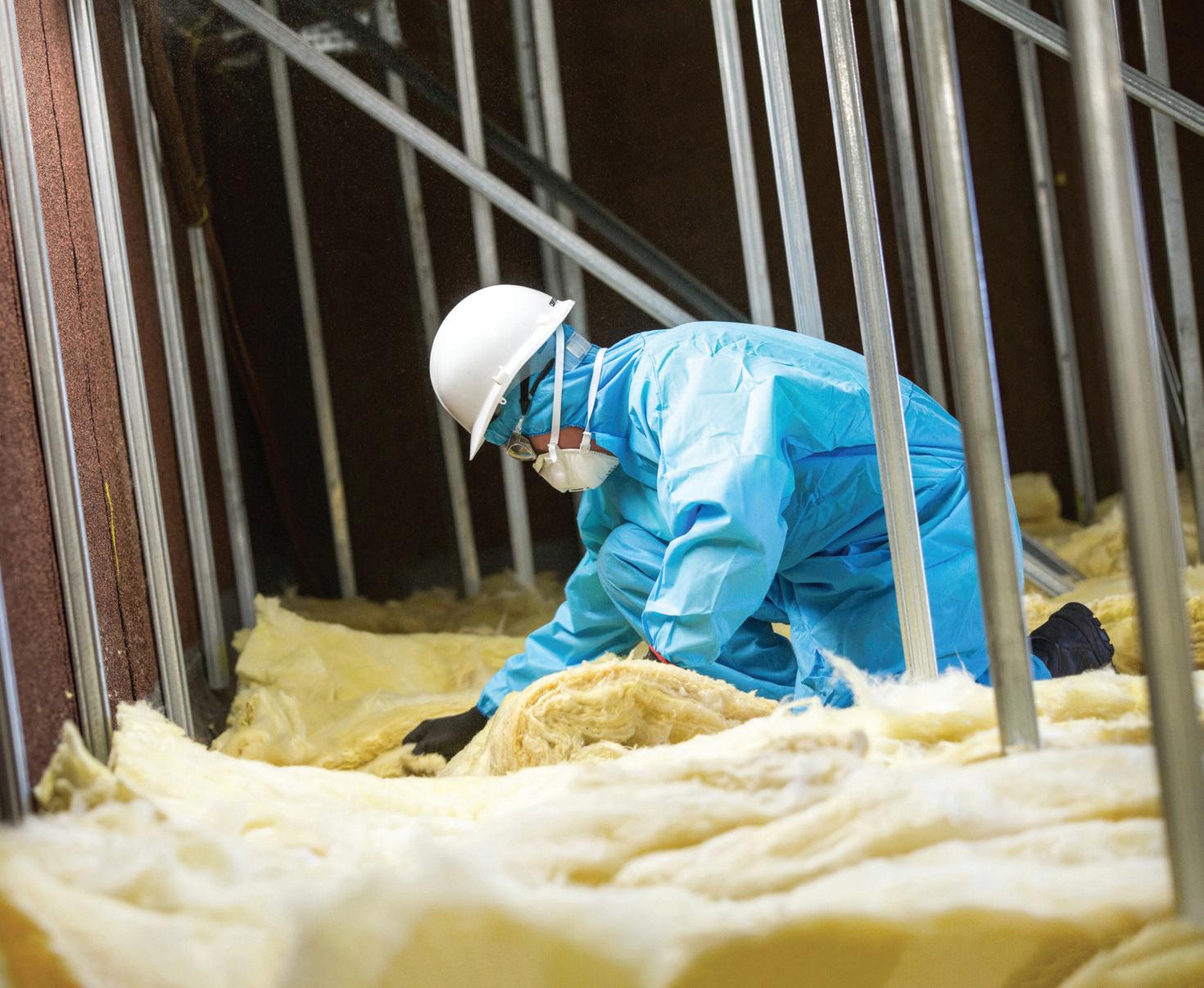
Trusted local authority

By working collaboratively with a trusted contractor to create a bespoke package of trusted measures, local authorities and social housing landlords can be confident in providing the highest level of fire prevention and protection for residents
This in turn will help to reassure residents that they are living in the safest possible environment ultimately helping to build trust in the local authority
n For more information on Novus Property Solutions’ passive fire protection services visit www rdr link/lag023
3 6 I L A B M N O V E M B E R / D E C E M B E R 2 0 2 2
“T h e i m p o r t a n c e o f l o f t c o m p a r t m e n t a t i o n i s ga i n i n g t ra c t i o n , a s l o f t s p a c e s a r e k n ow n t o p r e s e n t a s eve r e r i s k o f ra p i d fi r e s p r e a d ”
FIRE PROTECTION & SECURITY
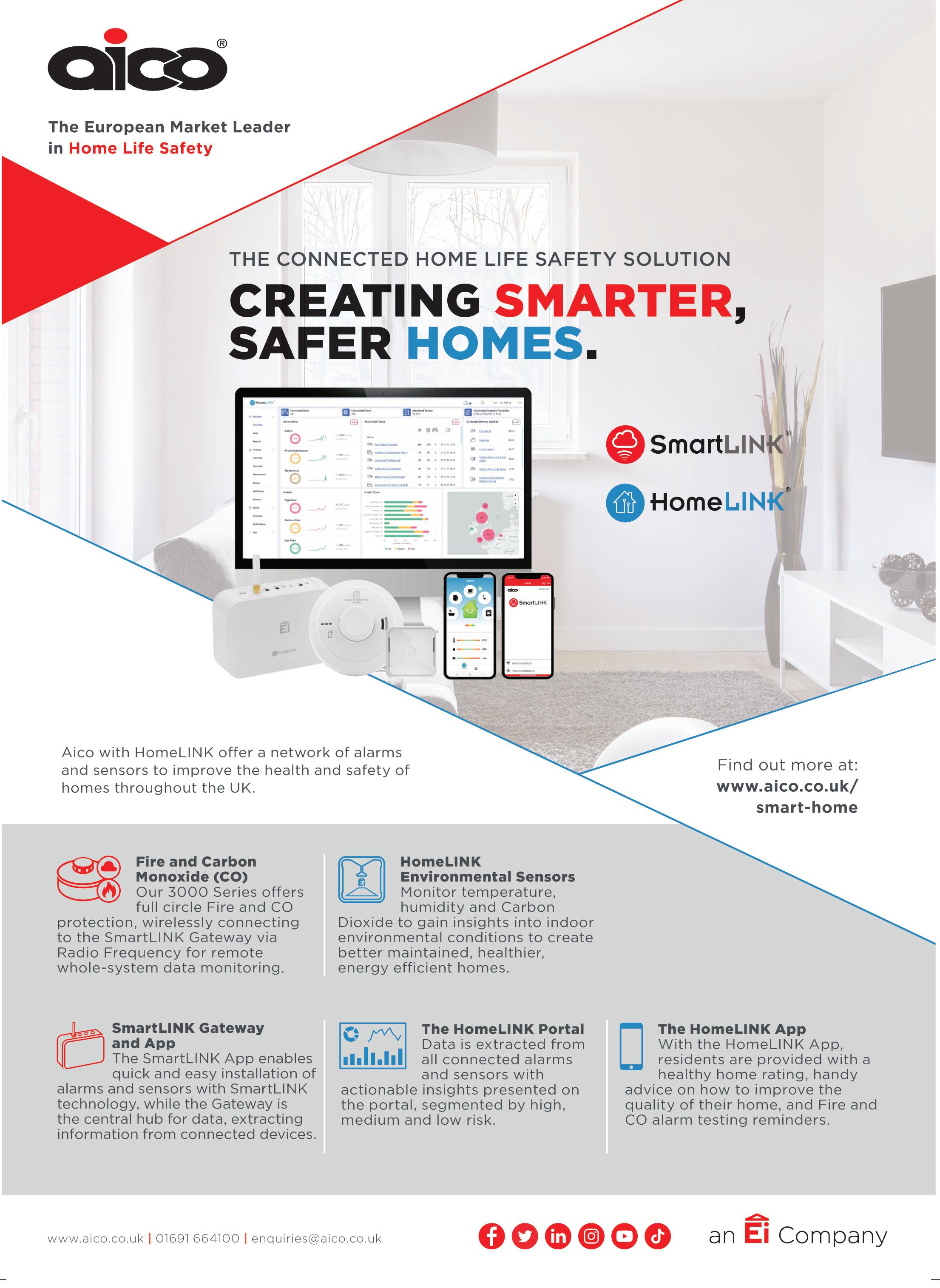
rdr.link
Introducing rdr.link
A new digital service for our readers
With a wide array of online resources supporting the latest solutions – from videos to technical guides, PDFs to Podcasts – it can be a challenge to locate what you need.
To ensure you don’t miss out on these valuable resources, we are introducing rdr.link – a new, rapid service to transport you immediately to the online resources mentioned in our stories.
So, in articles you may now see things like: “To view an exclusive time-lapse video of the process use rdr.link/AB101”
Simply enter rdr.link/ with the unique 5 digit code into a browser and it will take you directly to the mentioned resource – in this case the video.
Or, on other pages, you may notice: “For more new products & solutions use rdr.link/AB101”
Just type rdr.link/AB101 into your browser and be transported to the products section on our website, packed full of new solutions.
Designed to help busy professionals rapidly locate more information – look out for & use rdr.link

Get ting to grips with legislation

 Jan Taranczuk, Strategic Housing Advisor at fire suppression specialists Plumis, discusses what new fire safety r ules will mean for social landlords
Jan Taranczuk, Strategic Housing Advisor at fire suppression specialists Plumis, discusses what new fire safety r ules will mean for social landlords
New fire safety regulations are bringing in a raft of extra requirements and responsibilities for housing providers, in a bid to better protect residents living in high rise blocks In addition to the Building Safety Act, the Government has introduced the Fire Safety (England) Regulations 2022 as part of its ongoing response to the Grenfell Tower tragedy and the resulting inquiry’s recommendations
With the new regulations coming into force in January 2023, social landlords need to take stock of these latest reforms and the implications for their organisations

Key changes
The changes include:
l The need to provide residents with fire safety instructions and information about the importance of fire doors, in all multi occupied residential buildings
l Annual checks of flat entrance doors and quarterly checks of all fire doors in communal areas, in residential buildings over 11 metres high
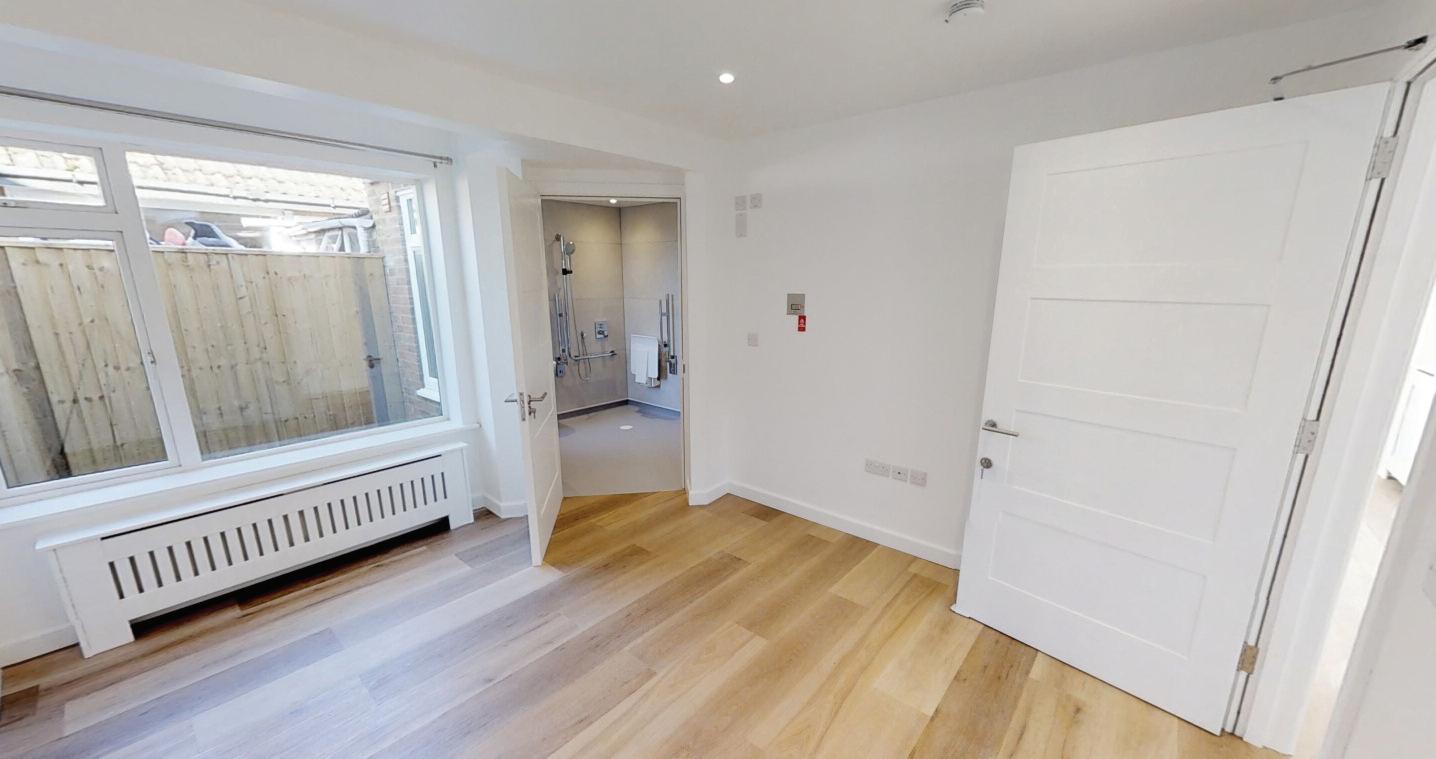
l Monthly inspections of lifts and fire fighting equipment
l The need to share information (including building floor plans and details of high rise blocks’ external wall design and materials) with fire and rescue services which will help them respond in case of a fire
There are also requirements around installing secure information boxes in
buildings, along with wayfinding signage which is visible in low light or smoky conditions
Housing providers must make sure they have plans in place to action these legislative changes Perhaps most importantly, this should include a resident engagement strategy to ensure they are informing everyone about how to keep themselves and their neighbours safe
The regular inspections of fire doors and firefighting equipment will need to be scheduled in, as well as robust processes to accurately record such checks, in order to demonstrate compliance with the regulations and promptly action any remedial work necessary
Beware complacency
The new rules are to be welcomed as a further step forward in improving fire
safety for residents living in high rise flats However, having implemented these changes, it is vital that housing association boards and leadership teams guard against complacency
The Building Safety Act stipulates that, once the ‘accountable person ’ has demonstrated that their high rise residential building complies with the law, the Health and Safety Executive will issue a Building Assessment Certificate confirming that the property is safe for occupation
But, while this certificate proves that steps have been taken to reduce the opportunity for a fire within the building to spread, these measures do nothing to actually reduce the risk of fires occurring in the first place
The danger is that residents, along with their landlords, will assume that they are effectively safe from fire in such a building
N O V E M B E R / D E C E M B E R 2 0 2 2 L A B M I 3 9
PROTECTION & SECURITY
FIRE
Social housing providers are increasingly installing fire suppression systems, like Automist, to ensure the safety and wellbeing of residents
but people’s behaviour will, inevitably, remain a crucial consideration Hence, as well as making these necessary statutory changes, housing providers must also maintain continuous messaging to their residents (without becoming so repetitive it begins to be ignored) around fire prevention and safety awareness
So, for example, they might use newsletter articles, website blogs or social media posts reminding customers of basic (but sometimes overlooked) advice such as never leaving candles or cooking unattended, running washing machines overnight or smoking in bed


Evolving fire risks

Such messaging should also reflect a recognition of emerging fire safety challenges, including the potential
Earlier this year London Fire Brigade revealed that it had seen a ‘huge spike’ in fires involving e scooters and e bikes, with its crews attending over 70 such fires in 2021 They said most fires relating to personal vehicles happened in homes and were often caused when charging their batteries
Just this summer the brigade issued an urgent safety warning, after an e bike battery failure caused a large fire in a west London tower block, urging people not to charge bikes while they were asleep or to store them in communal areas
An electric bike is also believed to have started a fire at a Bristol tower block in September this year, when a man tragically lost his life after falling from a window as he tried to escape the blaze E scooters have even been banned on London’s public transport after some with faulty batteries caught fire in stations and trains on the Underground
So, while engaging with residents is intrinsic to the success of new fire safety legislation in achieving its life saving aims, housing providers need to ensure their fire prevention measures and messages keep pace with the changing risks they seek to combat
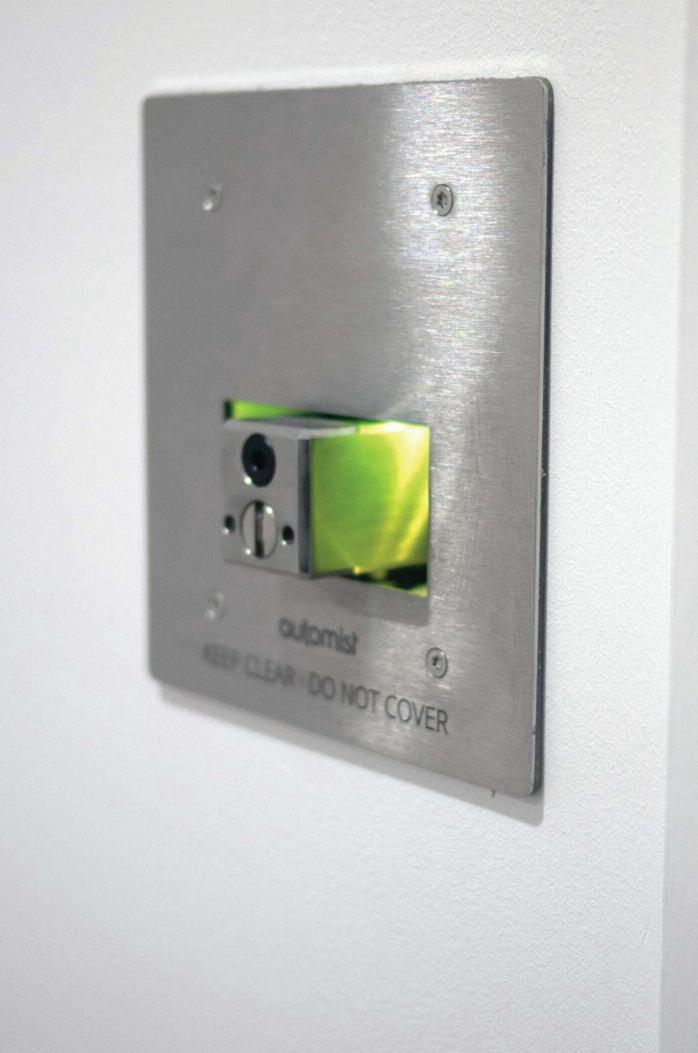
Cycle of change
Of course, the latest regulations should come as no surprise With the spotlight
much cast upon fire safety issues in recent years, social landlords all over the country have been preparing themselves for what to expect next
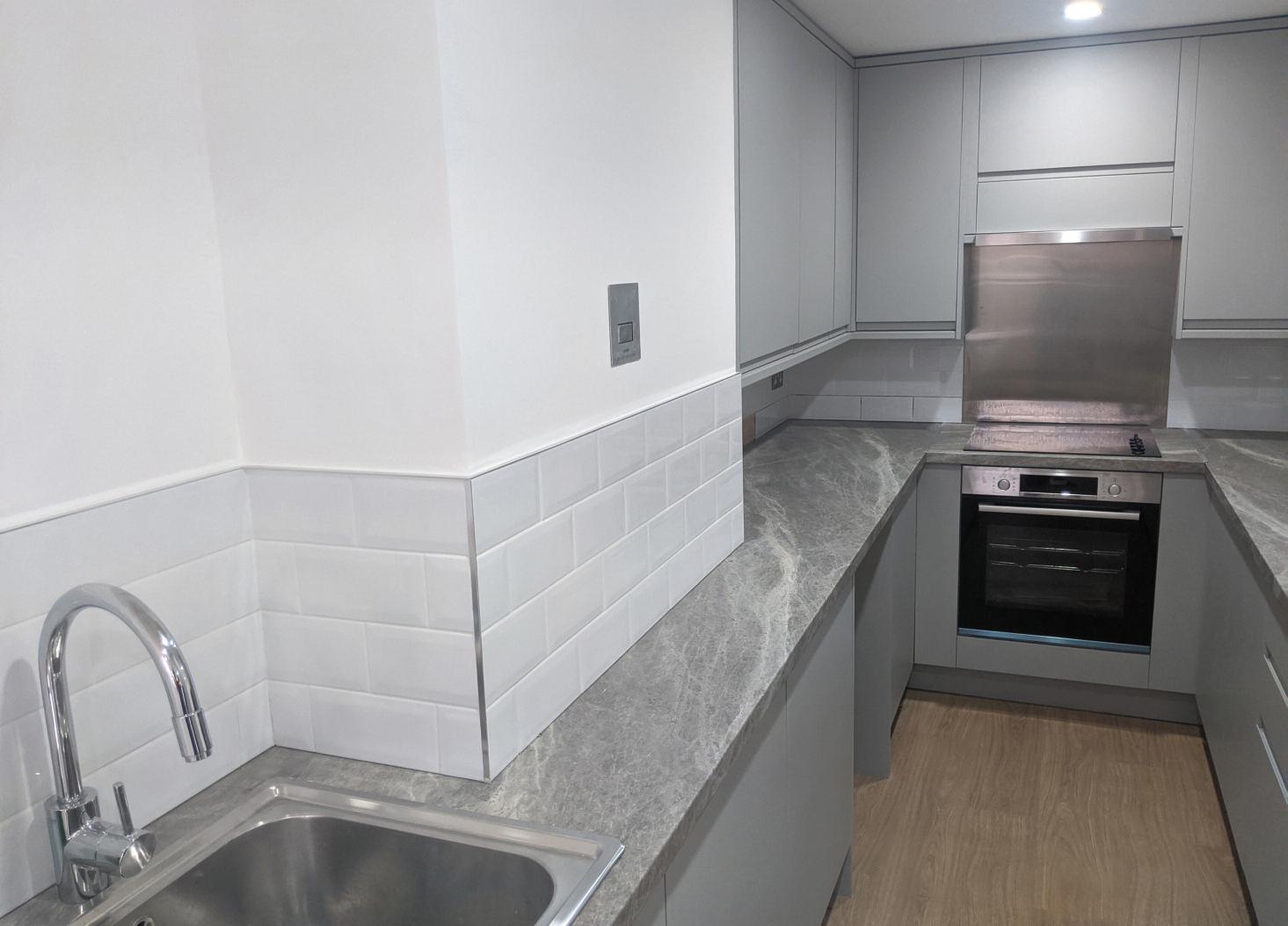

But it is important we recognise that change is a cycle Having implemented changes, we then have to start the process again, monitoring our progress and making further changes in order to continuously improve the way we do things
We need to re assess organisational cultures and mindsets within the social housing sector so that it becomes universally appreciated that fire safety changes will never be completed they must always be an ever evolving aspect of a landlord’s responsibilities and operations
Leadership teams should be alive to this, encouraging their boards to constantly challenge with ‘what if ?’ questions, while having the confidence in their fire safety staff to know they will be able to provide the answers

On top of the necessary actions to comply with these new rules, everyone involved from the housing officer who regularly visits residents to the board member who combs through regulatory reports must avoid complacency and continually ask themselves ‘Are we doing enough?’
n For more information on Plumis and its solutions visit www.rdr.link/lag024
dangers posed by charging the UK’s growing number of electric bicycles, scooters and even cars
very
4 0 I L A B M N O V E M B E R / D E C E M B E R 2 0 2 2
Automist has been independently tested to show it provides BS 8458 fire performance
PROTECTION
Automist uses 10 times less water than a sprinkler, reducing post activiation water damage Smoke alarm
FIRE
& SECURITY

S u c c e s s f u l c o l l a b o r a t i o n t o m e e t g u i d a n c e
Ensur ing the safety of tenants has always been a paramount concer n for social housing providers. Now, with new legislation for landlords in place mandating the provision of CO and smoke alar ms, Mar tin Wilson, Sales Director at Resideo, looks at what this means for the sector across both new and existing proper ties, and the options available to meet this demand
Th e D e p a r t m e n t f o r Le v e l l i n g U p, H o u s i n g a n d C o m m u n i t i e s
( D LU H C ) h a s t a k e n a r e n e w e d a p p r o a c h t o s m o k e a n d c a r b o n m o n ox i d e a l a r m s b y m a n d a t i n g t h a t n e w b u i l d d e v e l o p e r s , p a r t i c u l a r l y t h o s e w i t h i n t h e s o c i a l h o u s i n g s e c t o r, e n s u r e t h a t t h e r i g h t a l a r m s a r e f i t t e d i n n e w a n d e x i s t i n g p r o p e r t i e s
The recommendations for social housing in England and Wales included in The Smoke and Carbon Monoxide Alarm (Amendment) Regulations 2022: guidance for local authorities, are in force from 1st October 2002 It aims to extend existing private rented legislation to socially rented properties, as well as making improvements to existing legislation
For fire safety, the guidance for England and Wales requires at least one
smoke alarm to be installed on each storey of a property, to help alert tenants to domestic fires more quickly, ensuring a quicker evacuation and reduced risk of fatality In addition, in both privately rented houses and social housing, carbon monoxide alarms are now mandatory in rooms with any fixed combustion appliance (excluding gas cookers)
In Scotland, legislation that came in February 2022 is arguably more stringent than in England and Wales Not only is it mandated that carbon monoxide alarms are installed in any room with fixed combustion appliances (excluding gas cookers), but also that every home has one smoke alarm in the most used room in the house, a smoke alarm in every hallway or landing and a heat alarm in the kitchen Additionally, these smoke and heat alarms should be
interconnected (or ‘interlinked’), so when one alarm goes off, they all go off, alerting people wherever they are in a house
These regulations now form the minimum standard for safe houses, and local authorities will be able to use their statutory powers to ensure these are met

CO alarms in action
As one of the largest social housing providers in the UK, Nottingham City Homes (NCH) had a significant challenge to meet the new regulations easily and in a timely manner, whilst ensuring that tenant safety wasn’t compromised With a mission to create homes and places where people want to live, NCH places resident safety at the top of its list of priorities
Fixed combustion appliances, such as space heaters, fireplaces, water heaters,
FIRE PROTECTION & SECURITY
and clothes dryers are often powered by fuels such as oil, kerosene, wood, and coal or liquefied petroleum gas (LPG) All have the potential to cause carbon monoxide (CO) poisoning in the home, with children, the elderly, and pets are particularly vulnerable, but installing a CO alarm, alongside fuel burning appliances can significantly lower that risk
CO has a slightly lower density than air, and therefore tends to accumulate near the ceiling, so it is recommended that any CO alarms be placed on the ceiling, or at least five feet above the floor As such, ease of installation remains key to avoid unnecessary disruption to tenants' homes

By tapping into the expertise of Resideo, a leading global provider of home, air, water, security and energy products and solutions, Nottingham City Homes was able to successfully roll out a solution that would meet the new regulations coming into force As a result, over 24,500 CO alarms will be installed in homes managed by NCH
Overcoming challenges
A key challenge of the project was that the solution had to be suitable for all tenants, particularly those with hearing impairments From the outset, Resideo’s team of experts was on hand with the product knowledge and supported NCH in finding the right solution and concluded that Resideo’s wireless Honeywell Home R100C 1 would be ideal
The alarm offers a visible built in flashing alarm system on the front of the unit, making it advantageous for elderly tenants and those who are hard of hearing Fitted with a high precision sensor, the alarm sends out a signal as soon as dangerous levels of CO are identified in the room A red ‘ALARM’ text will flash up on the alarm when it sounds and remains
on until it is dealt with As a result, if it is activated whilst the tenants are away from the property, when they return they will be alerted to an incident immediately
A second challenge was to be able to retrofit, easily and with minimum disruption to homes The lightweight design combined ease of fit with additional end user benefits, including a low power chip to ensure they last for 10 years in standby mode

Steve Cooper, Head of Mechanical and Electrical at NCH, says: “Tenant safety is our number one priority here at Nottingham City Homes, which is why we made the decision to begin our CO alarm installation programme earlier this year The programme meant our team of engineers were installing around 500 units each week, so we were looking for a product that was quick, lightweight and could be added to properties without hassle or delay
“The R100C 1 not only looked good, but the flat back of the product made it particularly simple to fit We also had the extra peace of mind that it came from a manufacturer that we knew we could trust to deliver the quality that matched our own objectives ”
In an ongoing programme, R100C 1 CO alarms are also being installed across all NCH properties with a gas appliance
Steve concludes: “We’re always on the lookout for solutions that benefit tenants but also minimise disturbance to their home Not only does the R100C 1 come with a 10 year battery life and warranty, but its slim design also enables our engineers to easily install the alarms, saving time and minimising disruption to our tenants ”
Smoke and heat
Whilst improved safety standards over time have greatly reduced the consequences of

domestic fires; faulty wiring, unattended cooking and smoking remain the most common causes In addition, modern fireproof household materials, appliances and furniture generate a lot less smoke than standard materials, which leads to smoke alarms taking longer to trigger
Choosing a smoke alarm from a trusted manufacturer can help to secure customer trust and reduce callbacks after completion For example, Resideo's Honeywell Home R200S 1 (standalone) and the R200S N1 (interconnected) smoke alarms come with a 10 year warranty with an automatic self test
Heat alarms also help warn of a potential domestic fire early on, as they detect an abnormal increase in temperature Heat alarms are particularly useful in rooms where dust collects easily, or where smoke is often present during cooking such as kitchens where installing a smoke alarm may result in a false signal
Providing several options, the Honeywell Home R200H N1, for instance, is an interconnected heat alarm with an integrated thermal sensor and wireless interconnection with up to 12 devices In addition, the Honeywell Home R200ST N1 is an interconnected combined heat and smoke alarm, which will pre warn tenants of an increase in temperature before detecting smoke, working well as an all in one solution for smaller dwellings such as flats or bedsits
Resideo's full range of Honeywell Home smoke, heat and CO alarms have been designed for suitability in all types of properties, with up to 12 devices being able to interlink at once
N O V E M B E R / D E C E M B E R 2 0 2 2 L A B M I 4 3
“N o t o n l y d o e s t h e R 1 0 0 C 1 c o m e w i t h a 1 0 ye a r b a t t e r y l i fe a n d wa r ra n t y, b u t i t s s l i m d e s i g n a l s o e n a b l e s o u r e n g i n e e r s t o e a s i l y i n s t a l l t h e a l a r m s , s a v i n g t i m e a n d m i n i m i s i n g d i s r u p t i o n t o o u r t e n a n t s . ”
To find out more about the
visit www.rdr.link/lag025
The Lenton Green estate in Nottingham
n
Honeywell Home smoke, heat and CO alarms
ASSA ABLOY Opening Solutions UK & Ireland has launched its new Openings Studio Mobile App, which allows users to manage buildings as a holistic system Information stored within the app enables buildings to be safely and effectively designed, constructed and operated Openings Studio is a cloud based, custom configuration tool for the creation, visualisation, modification and management of door openings The BIM application provides access to complete doorset information at all stages from product concept to product care It helps architects and specifiers develop, design, and specify doors and hardware with live BIM connectivity and assists with the manufacture and quality check of approved doors The installation process and onsite information is also captured, and products are asset tagged (with either a QR code or RFID tag), allowing comprehensive door by door fire and performance inspections to be completed and recorded n To learn more about the Openings Studio Mobile App visit www.rdr.link/lag026

Solution to meet Part B requirements


The updated Part B of the Building Regulations has made it mandatory for all new build residential buildings over 18m to have an evacuation alert system To comply, the evacuation alert system should be provided in accordance with BS 8629 Advanced’s EvacGo complies with BS 8629 and operates completely independently of fire detection systems The panel combines EN54 2 and 4 approved MxPro 5 technology with clear, easy to use manual controls to ensure firefighters can quickly and effectively identify and operate alert sounders to support the safe evacuation of tall residential buildings It provides a simple, at a glance overview of a building’s evacuation alert zones, along with LED indication and manual toggle switch controls for operating evacuation alert devices in each zone

High performance fire doors installed at multi storey flats CCG (Scotland) has completed the supply and installation of its high performance fully certified CCG FD60 fire doors at a multi storey tower block in the town centre of Cambuslang Undertaken on behalf of South Lanarkshire Council, residents of Kyle Court, located on Main Street, have each received new 60 minute fire resistant flat entrance doors and 60 minute fire resistant common doors that have been designed and tested to meet the highest standard of industry performance for fire safety This means in the event of an emergency, the doors will provide a minimum resistance of an hour’s duration to offer vital assistance in combating the passive spread of fire and smoke as well as providing valuable protection for residents The doors were manufactured by CCG from their advanced facility located within a mile of the residence in the Clydesmill Industrial Estate
Voice is the choice for sounders
Research has shown that precise, clear instructions provided via voice alarm messages result in quicker reaction times than when sirens or bells are used, and has resulted in Voice Alarm or VA becoming more commonplace as the primary means of evacuation in public buildings The Vimpex Fire Cryer range of Voice Sounders are good examples of how voice technology is helping to reduce delay and response rate in evacuation times Fire Cryer is an electronic sounder capable of delivering clear, intelligible and synchronised voice messages and tones It can be used as a single message 24VDC conventional voice sounder on any sounder/notification alarm circuit, or as part of a sophisticated multi message, multilingual evacuation system The product requires just two wires to deliver 24VDC to any one of the Fire Cryer family of voice sounders
Fire door inspections
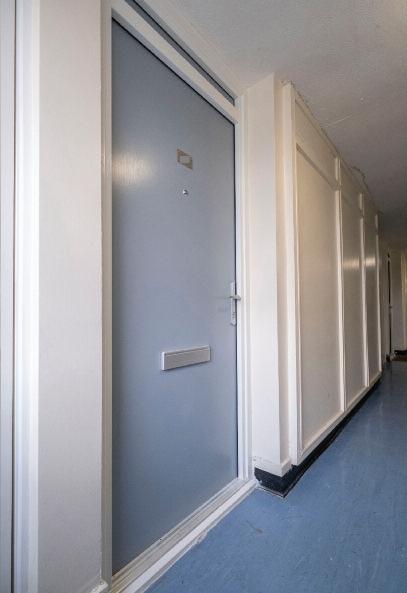
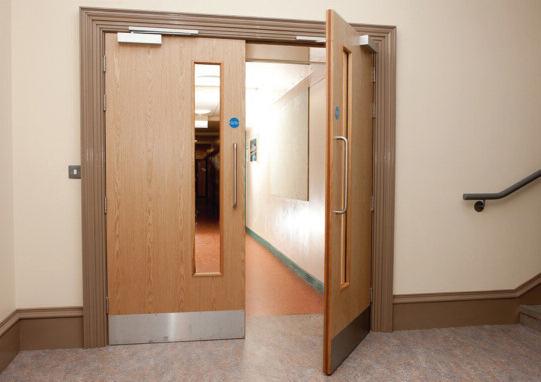
Changes under Article 24 of the Regulatory Reform (Fire Safety) Order 2005 (RRO) are coming into force from 23rd January 2023 It applies to multi occupancy residential buildings in England over 11 metres (more than three storeys) Article 24 of the RRO now requires, in law, the Responsible Person to: l undertake quarterly checks of all fire doors (including self closing devices) in the common parts
l undertake on a best endeavour basis annual checks of all flat entrance doors (including self closing devices) that lead onto a building’s common parts Need help with inspecting, repairing, maintaining or replacing fire doors, why not speak to the experts at Onyx Fire & Security? The company ’ s fire door installation and maintenance services are certified under the BM Trada Q Mark Scheme and it can provide a full on site service, as well as full O&M manuals to confirm that every fire door is compliant with the new requirements

FIRE PROTECTION & SECURITY ROUND UP
New BIM mobile app
n More information on The Vimpex Fire Cryer range here www.rdr.link/lag028 n More information on the EvacGo Evacuation Alert System here www rdr link/lag027 n For more information on CCG (Scotland) and its fire doors visit
n More information on Onyx and its services here www.rdr.link/lag030 4 4 I L A B M N O V E M B E R / D E C E M B E R 2 0 2 2
www.rdr.link/lag029
Bathroom retrof i t
Retrofitting the UK’s existing building stock has been described as the built environment’s ‘Net Zero Carbon priority’ The benefits of whole house retrofit over installing single technologies are clear to see and there are many reasons why the bathroom must not be an afterthought
It’s important to consider the importance that the bathroom plays in our lives Bathrooms offer a retreat from the pressures of modern life We carried out YouGov research in 2018, which showed that the bathroom was, in fact, the most popular place of refuge for UK consumers 1
There are environmental considerations too The search for sustainability in the home isn’t just about minimising energy consumption, it also encompasses the need to manage and conserve other resources, such as water a subject that has been the focus of much attention in the summer Bathroom retrofits provide the opportunity to introduce a wide range of resource efficient measures including water saving dual flush WCs, as well as thermostatic showers and water saving baths too The Twyford Celtic Low Volume 1700 bath, for example, has a capacity of
140L to the overflow, whilst still offering the benefits of a standard steel bath an estimated 35% water saving compared to a standard size bath Water efficiency benefits both the housing provider under increasing pressure to deliver on sustainability and tenants when it comes to cost savings
Considerations for housing providers
If bathrooms are to be included in retrofit upgrades, what considerations do housing providers need to take into account? Here are Twyford’s top four tips on what to consider when delivering effective, efficient and cost effective bathrooms
1 Durability Like any product specified in the home, consider the durability and lifetime cost over initial investment We all know the phrase ‘buy cheap, buy twice’ and it applies to basins and WCs as much as it does to electronics Work with a trusted supplier to ensure you are buying good quality products designed for the housing sector and who can offer a guarantee
2 Hygiene The emphasis placed on hygiene has skyrocketed since the pandemic and its importance is only
going to grow further Ask your supplier how their products have been developed to enable easier cleaning, from rimless WC technology, featured in Twyford’s Alcona range, to wall hung toilets
3 Ease of installation A big one for housing providers, who are potentially tasked with upgrading hundreds of properties in an individual programme Look for installation benefits such as Twyford’s Total Install system, which includes a range of factory fitted professional fittings to help achieve a quick and easy high quality finish using fewer tools
4 Added value support Don’t underestimate the value of choosing a supplier that can support upgrade programmes too This includes an experienced team offering high service standards from design through to after sales and service support
1 https://www barbourproductsearch info/geberit white paper science behind the sensory space 2019 file096494 pdf

n For more information on Twyford Bathrooms range of solutions visit www.rdr.link/lag031


N o V e m B e r / D e C e m B e r 2 0 2 2 L A B m I 4 5
DIsABILITY NeeDs
KITCHeNs, BATHrooms &
Sustainable retrofit has been identified as one of the key strategies in deliver ing net zero Here, Daniel Fairfield, Product Manager for Twyford explores the role of the bathroom in social housing retrofit programmes and what providers should consider when wor king with suppliers
Twyford’s Alcona range features rimless WC technology
Ever yone has a responsibility to be vigilant and prepared in case of fire. Like many UK based fire and rescue ser vices, the London Fire Br igade is proactive in promoting fire safety in the home. One key area is a home escape plan. Steve Hill, National Sales Manager for Terr y Lifts, offers advice on fire protection and domestic through floor lifts
M e a n s o f e s c a p e
The brigade advises ‘if you or anyone you live with might find it difficult to escape quickly without assistance in an emergency, make extra plans to get them to safety,’ and goes on to offer a free home fire safety visit for additional expert advice This is especially important and must be a vital consideration for those individuals using a lift to travel between floors in their home
Through floor lifts
Through floor lifts have risen in popularity since several models were introduced to the market in the 1980s As the name suggests, a through the floor lift offers an easy and invaluable means of movement between two floors for less able individuals, particularly those in a wheelchair
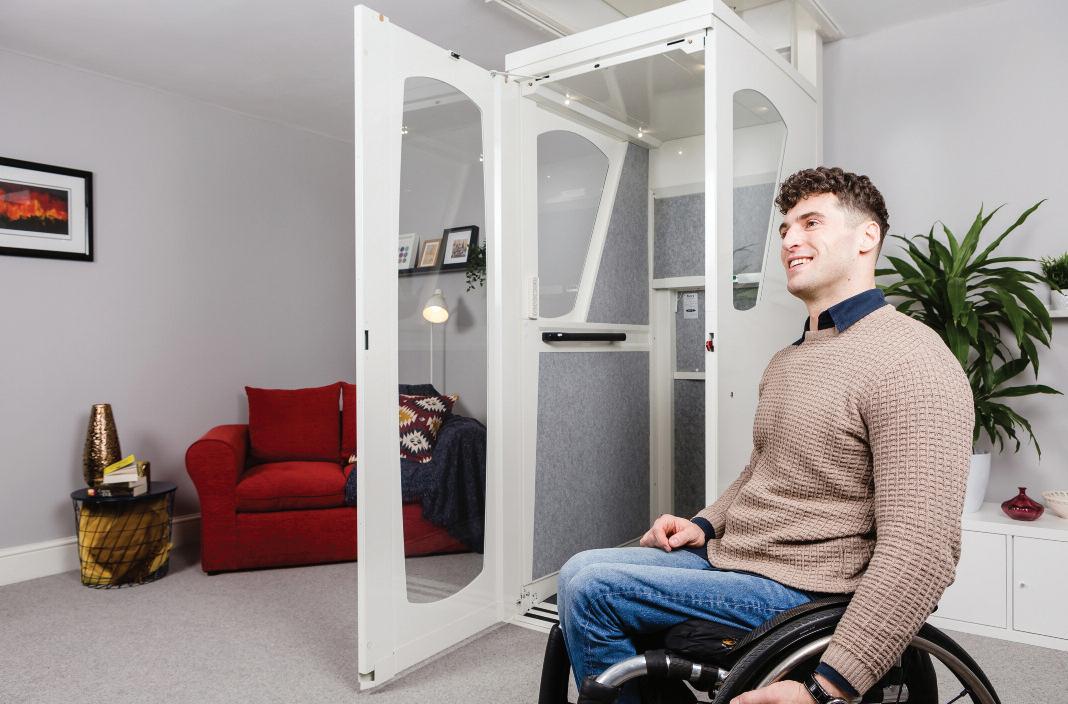
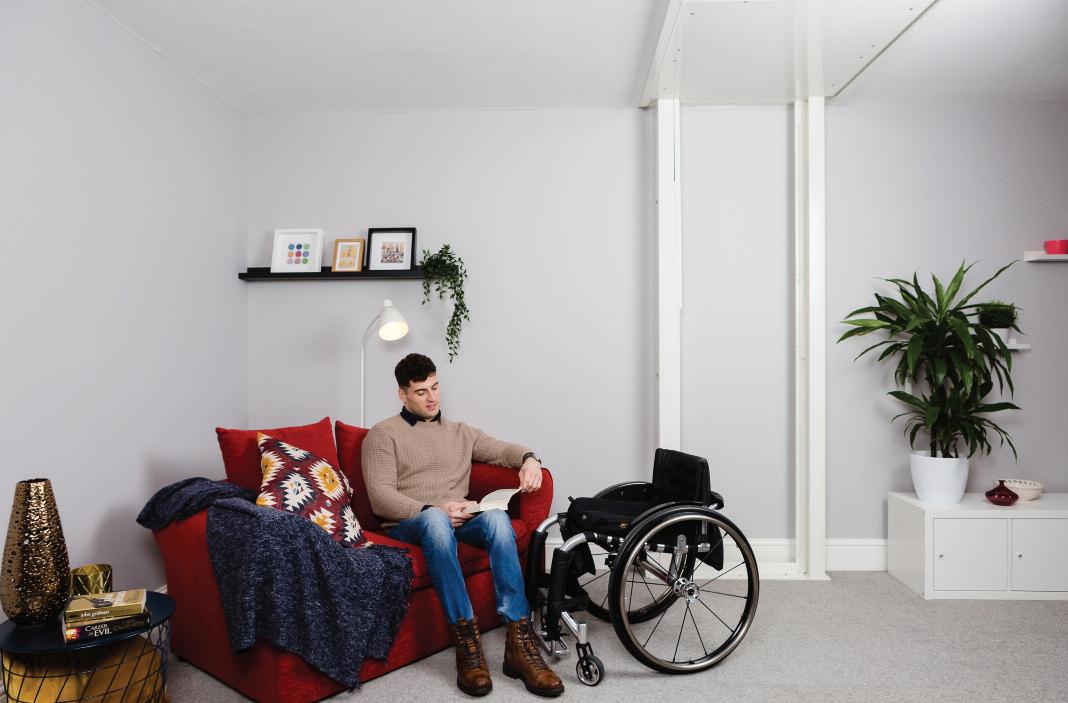
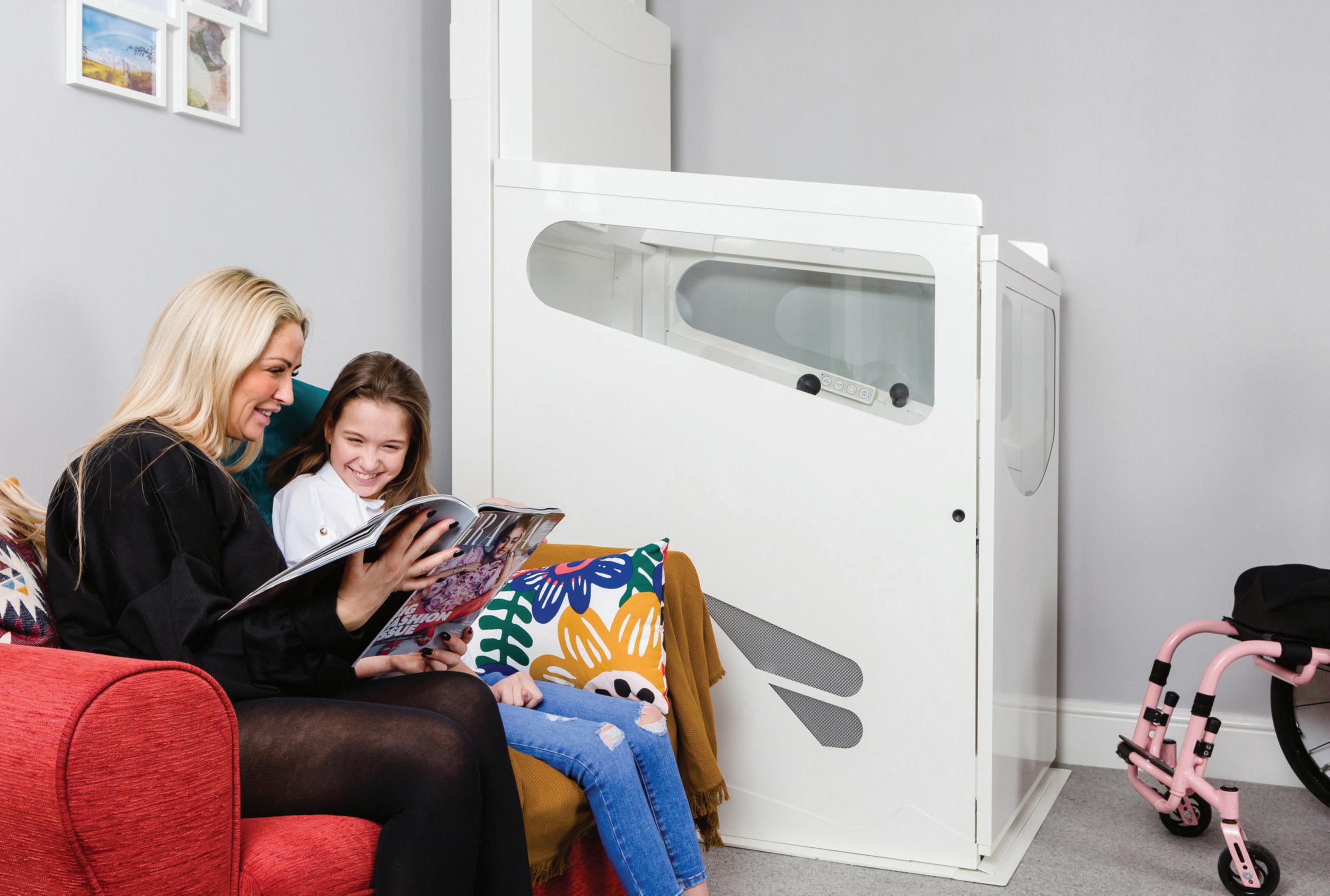
Today, the UK home lift market boasts several manufacturers and many suppliers



of through floor lifts However, not all lifts are made equal when it comes to smoke and fire protection
Smoke and fire protection barrier
A through the floor lift requires an opening to be created for the lift to pass through when travelling from floor to floor This instantly compromises the fire integrity and removes the fire protection of the
BATHROOMS & DISABILITY NEEDS
KITCHENS,
Through floor lifts have risen in popularity since they were introduced in the 1980s
In England and Wales, there is no statutory requirement to fit any fire protection to the underside or the top cover trapdoor for residential installations of through floor lifts
Terry Lifts’ Harmony home lift is compliant to BS 5900:2012
first-floor structure — potentially enabling a fire to move freely between floors.
In England and Wales, there is no statutory requirement to fit any fire protection to the underside or the top cover trapdoor for residential installations of through floor lifts. This can mean that there is no fire barrier between the floors, bearing in mind that in many cases the lift is positioned between a living room and a bedroom. This can prove extremely significant when trying to minimise the spread of smoke and fire to ‘buy’ time to allow a safe means of escape.
Some home lift suppliers believe that the addition of fire doors to compartmentalise the house helps to mitigate the risk. This is true but only to some extent as fire doors only deal with the horizontal spread of smoke and flame. This is not sufficient fire protection for a property with a through floor lift as, without vertical compartmentalisation, smoke and fire would be able to travel through the aperture and between the floors, unimpeded.
Lift manufacturers and suppliers who cannot comply with BS 5900:2012 often recommend the fitting of fire door to the

rooms served by the lift but this does not diminish the vertical compartmentalisation requirement.
Standard BS 5900:2012
BS 5900:2012 applies to powered home lifts with partially enclosed carriers and no lift way enclosures serving two floors in private dwellings only. The standard specifies requirements for the design, manufacture, installation, commissioning, testing, maintenance and dismantling of new permanently installed electrically powered home lifts. It can also be used as guidance for the refurbishment and re-installation of existing home lifts. The standard addresses both Fire protection (9.12) and Behaviour of home lift in the event of the fire (9.13).
BS 5900:2012 meets the essential health and safety requirements of Machinery Directive 2006/42/EC as enacted as the Supply of Machinery (Safety) Regulations 2008.
For best practice, a through the floor lift must comply with BS 5900:2012 and be independently tested by an approved body. Terry Lifts’ Harmony home lift, for example, is compliant to BS 5900:2012 —
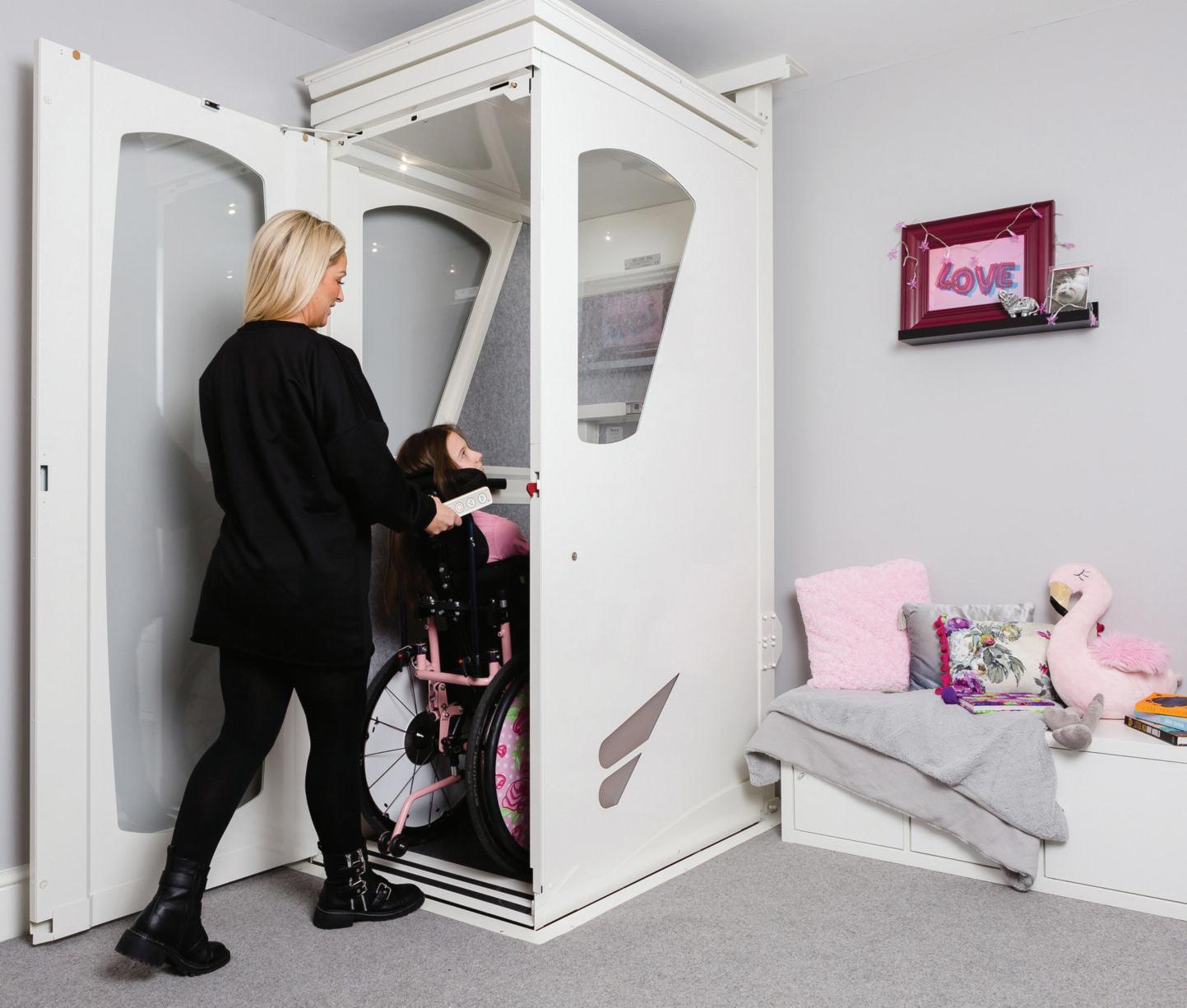
maintaining 30-minute fire and smoke integrity between the two floors, whether it is parked upstairs or downstairs.
Smoke and heat detectors
In addition to smoke and fire seals, some lift manufacturers also provide smoke alarms as standard. These are positioned at each level. Heat detectors are often provided as an alternative if the lift is adjacent to a kitchen, this prevents accidental activation from cooking smoke.
When the smoke detectors are activated, the lift is isolated to ensure it cannot be used. If the lift is in use, the home lift is taken out of action once it reaches its destination. At any point during transit, even though the smoke detectors have been activated, a change in direction is possible. Normal door and light operation are still available at landings.
Full compliance
To our mind, it is imperative that any specified product and product installation must demonstrate full compliance with BS 5900:2012, the Machinery Directive and Building Regulations, all of which have been written with the safety of the building occupiers and emergency services in mind.
It is also critical that a compliant home lift is installed by a competent engineer, ideally qualified to a minimum of NVQ Level 2 in Platform Lift Installation / Service & Repair and carrying a Construction Skills Certification Scheme (CSCS) card.
Furthermore, as every site will differ it is critical that the local Building Control Officer has conducted a site visit to ensure structural alterations and fire protections are to standard.
NOVEMBER/DECEMBER2022 LABM I 47
“For best practice, a through the floor lift must comply with BS 5900:2012 and be independently tested by an approved body. ”
n For more information on Terry Lifts range of through floor lifts visit www.rdr.link/lag032
G o o d v a l u e
Rocketing energy pr ices and the cost of living cr isis are having a huge impact on housing providers, as they look for solutions to dr ive net zero targets Chr is Tranter, Senior Product Manager at Br istan looks at some of the kitchen and bathroom solutions available to help councils and housing associations wor k more efficiently and sustainably across retrofit projects.
With around 80% of homes today still likely to be in use in 20501, housing providers are increasingly turning to sustainable retrofit to help achieve net zero targets and to help reduce project costs While energy efficient retrofits often focus on heating, building fabric, glazing and insulation, the kitchen and bathroom can play a crucial role in delivering warm and efficient homes, in turn improving the comfort, health and wellbeing of social housing tenants
Facing the sustainability challenge Bathroom retrofits provide the opportunity to introduce a wide range of resource efficient measures, including the installation of flow limiters to taps or on shower handsets or hoses At Bristan, we have recently upgraded our existing range of basin mixer taps to include neoperl 5ltr/min aerators, reducing waste without affecting the feel of the water flow this aerator is a small attachment that fits onto the outlet of the tap, cleverly controlling the amount of water flowing through while not affecting the feel of the water flow

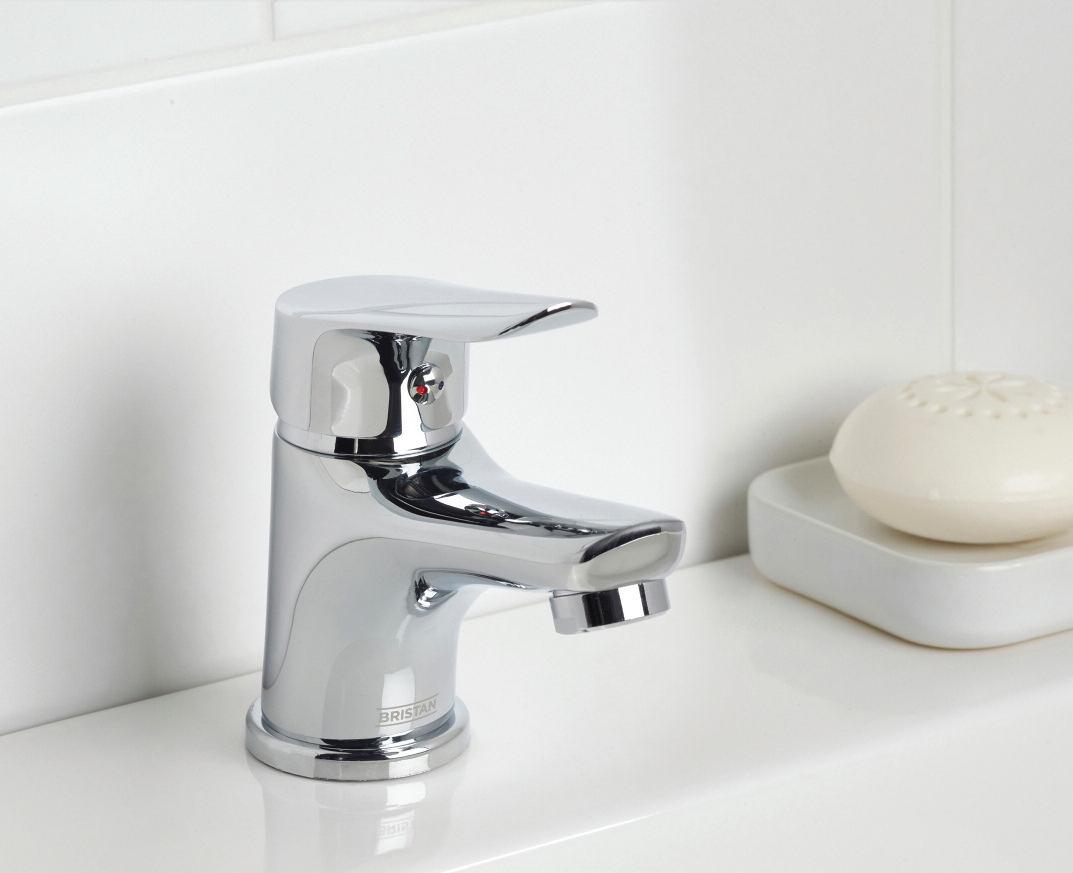
Value and reassurance

When it comes to retrofit, finding quality products that offer real value is a balancing act for housing providers Bristan recently
introduced an essentials range which offers an entry level, accessible price point but with all the reassurance of big name reliability When specifying kitchen and bathroom solutions, it’s important to partner with suppliers whose products offer guaranteed quality and robustness housing providers want durable products that offer long term performance and peace of mind, so it’s important specifiers look for brands with guarantees across any brassware products
Excellent service every time
don’t underestimate the value of choosing a supplier that has a dedicated team and one that can continue to support after installation Indeed, any leading and reputable brand should be continuously investing in its service capabilities
We recognised the importance of this with the recent rollout of a virtual remote Assistant (vrA) at our Midlands hQ this enables installer teams to access a live stream or live images of the bathroom, enabling them to provide instant product identification and service advice
Wellbeing
Finally, while providers are under increasing pressure to work more sustainably and efficiently, wellness and quality of life has never been more talked
about this is increasingly at the forefront of the agenda with the launch of the social housing Quality resident Panel earlier this year aimed at further driving the quality of housing While affordability will, naturally, remain a major factor for housing providers to consider, there are simple and affordable ways to instantly uplift the kitchen and bathroom space Finishes on taps, for examples, can transform the look simply by switching out a chrome tap to a black one a relatively inexpensive option but one that can make a huge difference to how the space is perceived
Meeting challenges
there’s no escaping the fact that the sector, like so many others, faces huge challenges ahead It’s never been more important to work with trusted and reputable bathroom manufacturers that stand for quality and industry expertise


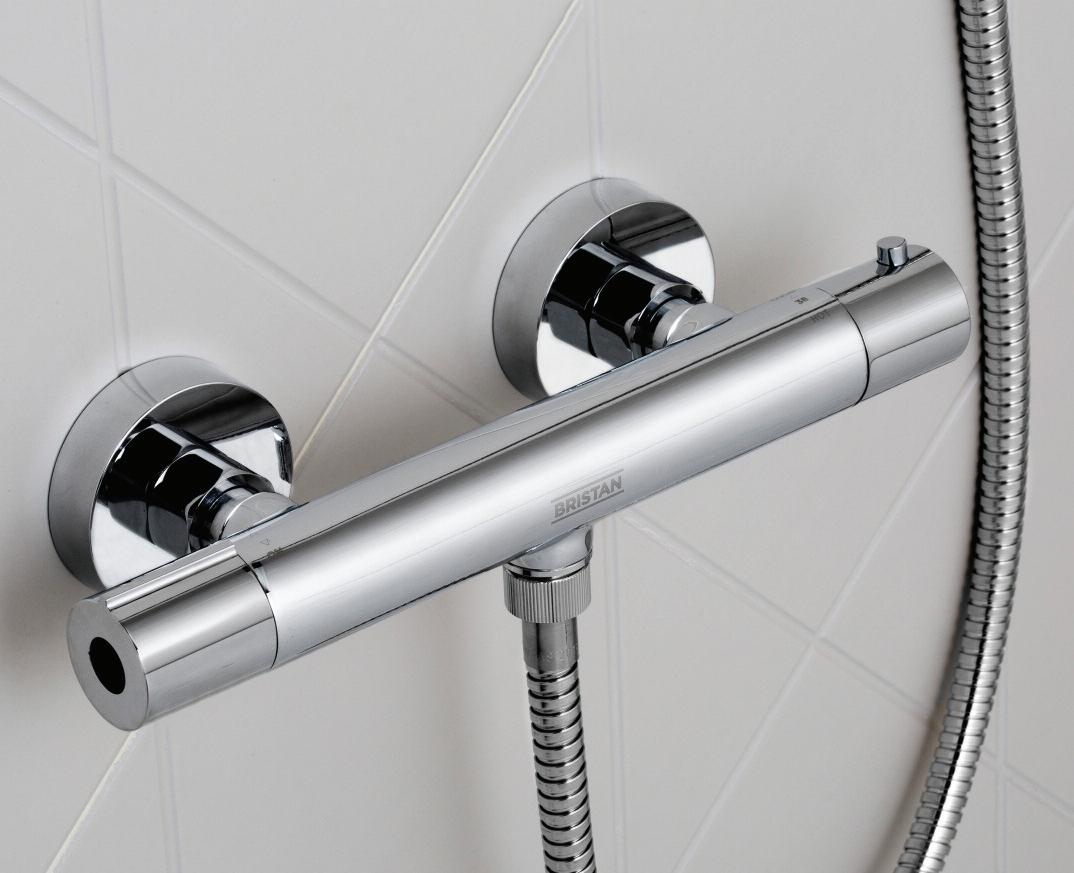
1 the Building specifier, 2022
n For more information on Bristan’s range, visit www rdr link/lag033



 KItchens,
KItchens,
BAthrooMs & dIsABILIty needs
4 8 I L A B M n o v e M B e r / d e c e M B e r 2 0 2 2
The Bristan Aster Basin Mixer Tap AST BAS C
The Bristan Zing Cool Touch Bar Mixer with Fast Fit Connections
The Bristan Odyssey Kitchen Sink Mixer Tap Deck Mounted in Chrome

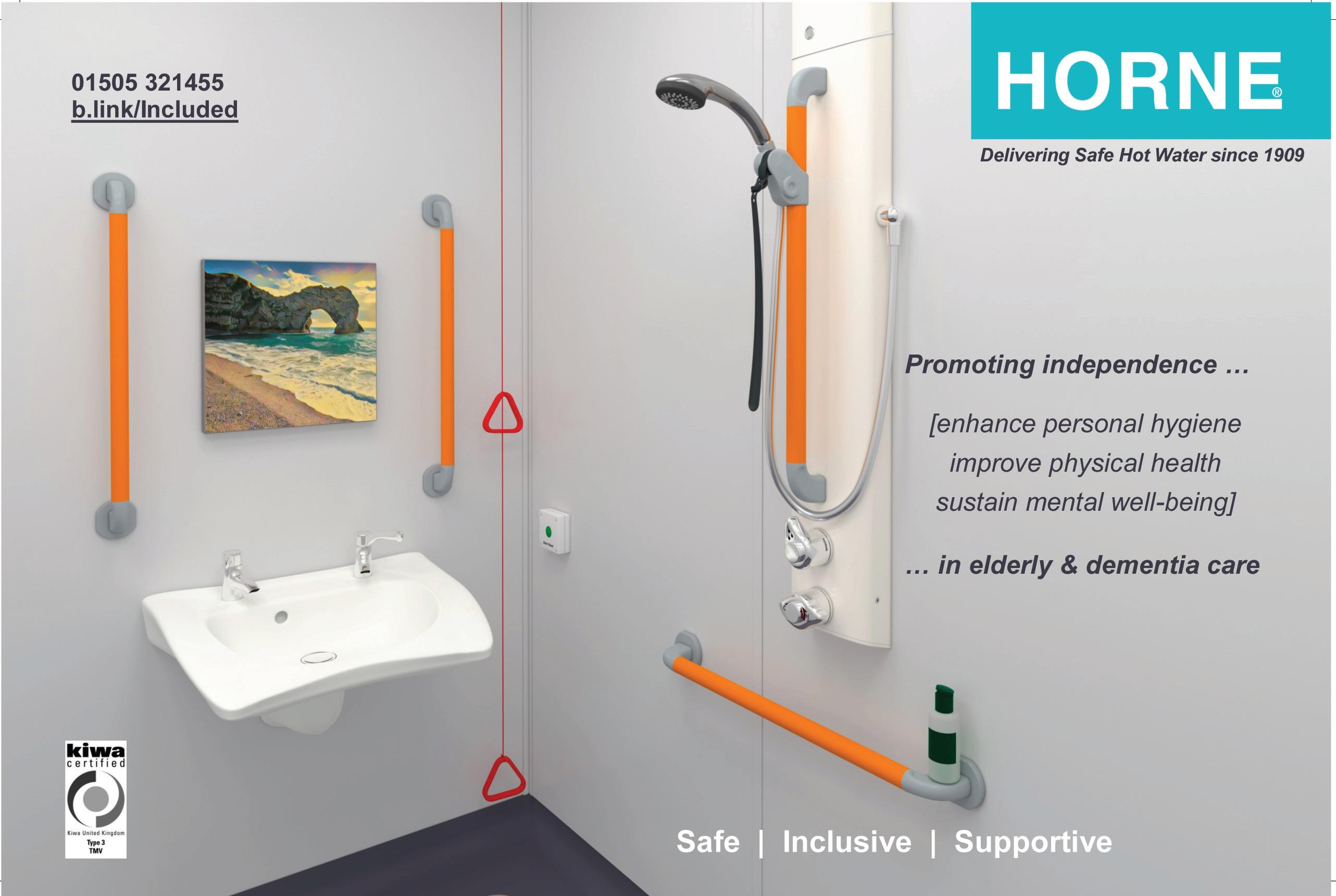
ROUND UP
Standalone showering cubicle
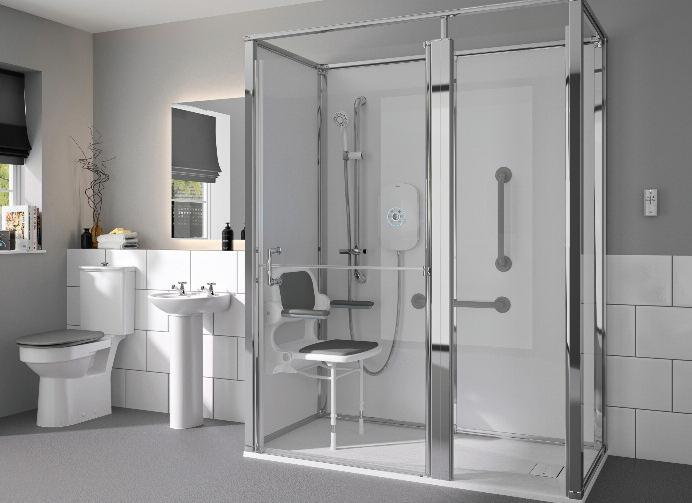
The AKW Onyx Care Pod standalone cubicle is the ideal option for those looking to clear adaptation backlogs, for hospital discharge and palliative care cases and as a future proof solution for housing stock The Onyx Care Pod can be installed within two to three days, making it up to 60% faster to fit than traditional wet room solutions As well as a standalone showering cubicle, the range also includes a Showerloo option that is ideal for those with additional toileting requirements The cubicle is watertight, and the wall panels are structural, allowing for the fitting of shower seats and grab rails at any time, as required As well as offering a high level of slip resistance, the shallow 26mm textured shower tray can be fully recessed if needed for wheelchair users or used with an AKW ramp
Saniflo provides a new CPD offering Saniflo UK has a new CIBSE approved CPD offering for Public Health Engineers, Mechanical Consultants, Architects, and Mechanical Installers The hour long talk, which can be supplemented with a two hour session of pump curve training if required, is designed to discuss and offer technical training on macerators and lifting stations for commercial and domestic buildings This CPD is part of wastewater and drainage in the public health sector/mechanical engineering

By the end of the presentation, attendees will understand the challenges of gravity fed drainage systems, be able to identify where and when to use a macerator or lifting station, be able to navigate critical installation requirements and considerations, understand some of the key differences between the lifting station technologies, and be able to use pump curves to help specify the correct pump
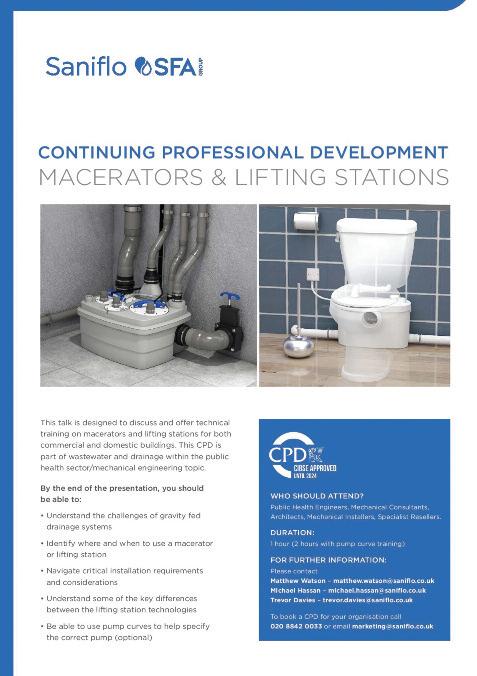
n To book a CPD, call 020 8842 0033 or email marketing@saniflo.co.uk
Saint
Samuel
KITCHENS, BATHROOMS & DISABILITy NEEDS
n More information on AKW’s Onyx Care Pod here www.rdr.link/lag034 5 0 I L A B M N O V E M B E R / D E C E M B E R 2 0 2 2 Advertisement index Here is a useful summary of all the adverts that appear in this issue of Local Authority Building & Maintenance. Each is listed with its page number and a direct URL that will get you straight to the relevant online information A Proctor Group (page 11) www rdr link/LAG100 Aico ..............................................(page 37) www rdr link/LAG101 BMI UK & Ireland (page 2/IFC) www rdr link/LAG102 Crown Commercial Service ........(page 9) www rdr link/LAG103 Designer Contracts (page 4) www rdr link/LAG104 Dulux Trade ..................................(page 19) www rdr link/LAG105
Thompson (page 49) www rdr link/LAG106
Engineering
Ltd
www rdr link/LAG107
UK Ltd ........................(page
www rdr link/LAG108
Rod
www rdr link/LAG109
ad ....................................(page
www rdr link/LAG110
Builder Live
www rdr
Ltd ........................(page
www rdr
www
Harrison
Horne
Co
(page 49)
Intratone
34)
Metro
(page 13)
Online
38)
Pro
(page 51/IBC)
link/LAG111 Rockwool UK
22)
link/LAG112 RDR (page 38)
rdr link/LAG113
Gobain Construction (page 52/OBC) www rdr link/LAG114
Heath & Sons ................(page 41) www rdr link/LAG115
Sunray (page 34) www rdr link/LAG116
..................................(page
www
Vaillant Ltd
25)
rdr link/LAG117
www
Winkhaus UK Ltd (page 33)
rdr link/LAG118

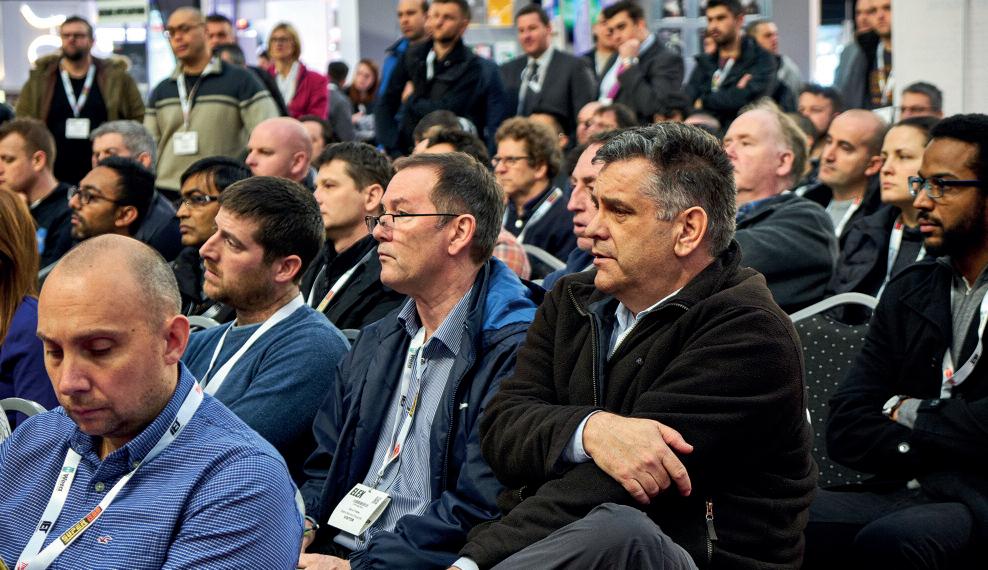
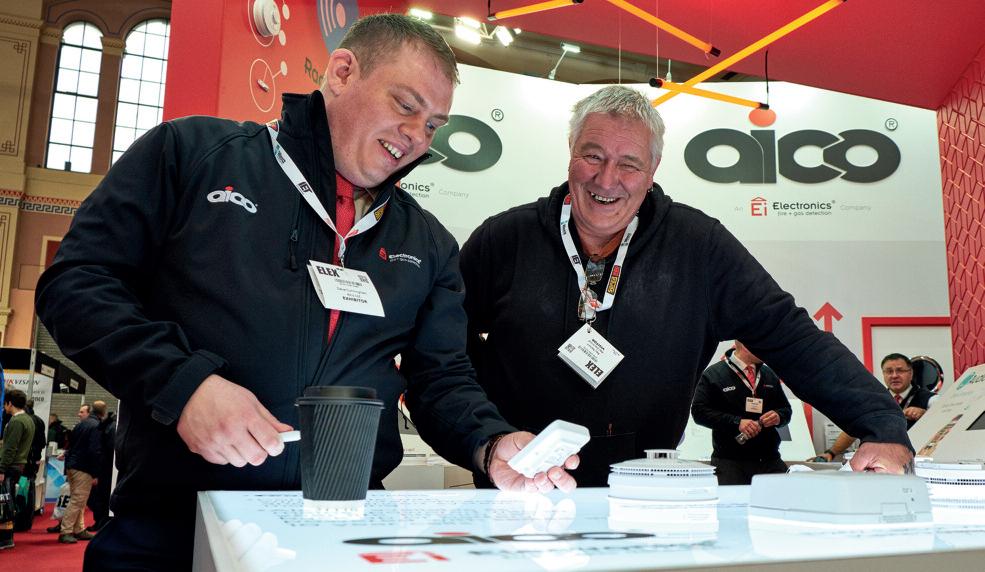


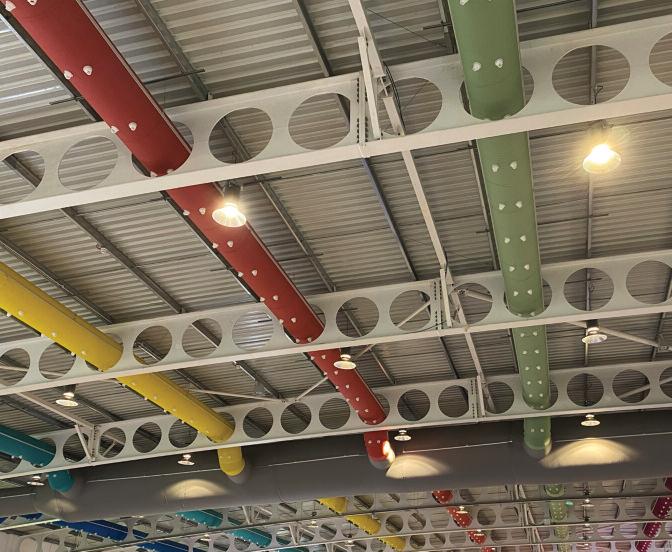

R E G I S T E R F O R F R E E AT W W W. P R O B U I L D E R L I V E . C O. U K T H E R E G I O N A L S H O W S F O R B U I L D I N G P R O F E S S I O N A L S COVERING ALL ASPECTS FROM HEATING AND PLUMBING TO BUILDING AND ELECTRICAL SERVICES ● FREE CPD SEMINARS ON LOW CARBON HEATING, FIRE SAFETY LEGISLATION AND EV CHARGING ● FREE ENTRY ● FREE PARKING FO RT H C O M I N G S H O W S : H&P HEATING AND PLUMBING T R A I N I N G Z O N E Professional LIVE! ELEX 2023 PROFESSIONAL ELECTRICIAN The Electricians’ Exhibition Sponsored by BOLTON ARENA BOLTON BOLTON ARENA BOLTON YORKSHIRE EVENT CENTRE HARROGATE YORKSHIRE EVENT CENTRE HARROGATE 9TH & 10TH MARCH 2023 ALEXANDRA PALACE LONDON ALEXANDRA PALACE LONDON 30TH & 31ST MARCH 2023 27TH & 28TH APRIL 2023





































































































 safety plays in housing refurbishment and retrofit projects, as
building residents’ tr ust
safety plays in housing refurbishment and retrofit projects, as
building residents’ tr ust








 Jan Taranczuk, Strategic Housing Advisor at fire suppression specialists Plumis, discusses what new fire safety r ules will mean for social landlords
Jan Taranczuk, Strategic Housing Advisor at fire suppression specialists Plumis, discusses what new fire safety r ules will mean for social landlords
















































